Join me as we look at an amplifier I’ve been meaning to write about for years – the incredible Sansui AU-20000.
Welcome back, folks, and my apologies for taking so long to write a proper article about the Sansui AU-20000. I’ve worked on a few of these incredible amplifiers over the years, INCLUDING one I co-own with the Speaker Doctor! Time to rectify that. Also, time to fix my AU-20000, but that will have to wait a little longer…
These large, complex amplifiers typically need complex repair strategies and that means lots of work, photos, and long, involved articles that I find hard to create, being so busy. To give you an idea, it took me the entire day to put this 3000-word article together and that means no repairs, consults or money earned for that whole day. The day after writing this, I’m so tired I can’t do much either, so it often takes out more than a day!
I enjoy sharing these stories though and I’ve just repaired this stunning and incredibly rare AU-20000, so last in, first out as they say! That added bonus here is that this is probably the best condition AU-20000 I’ve seen, so it’s a perfect candidate for this story.
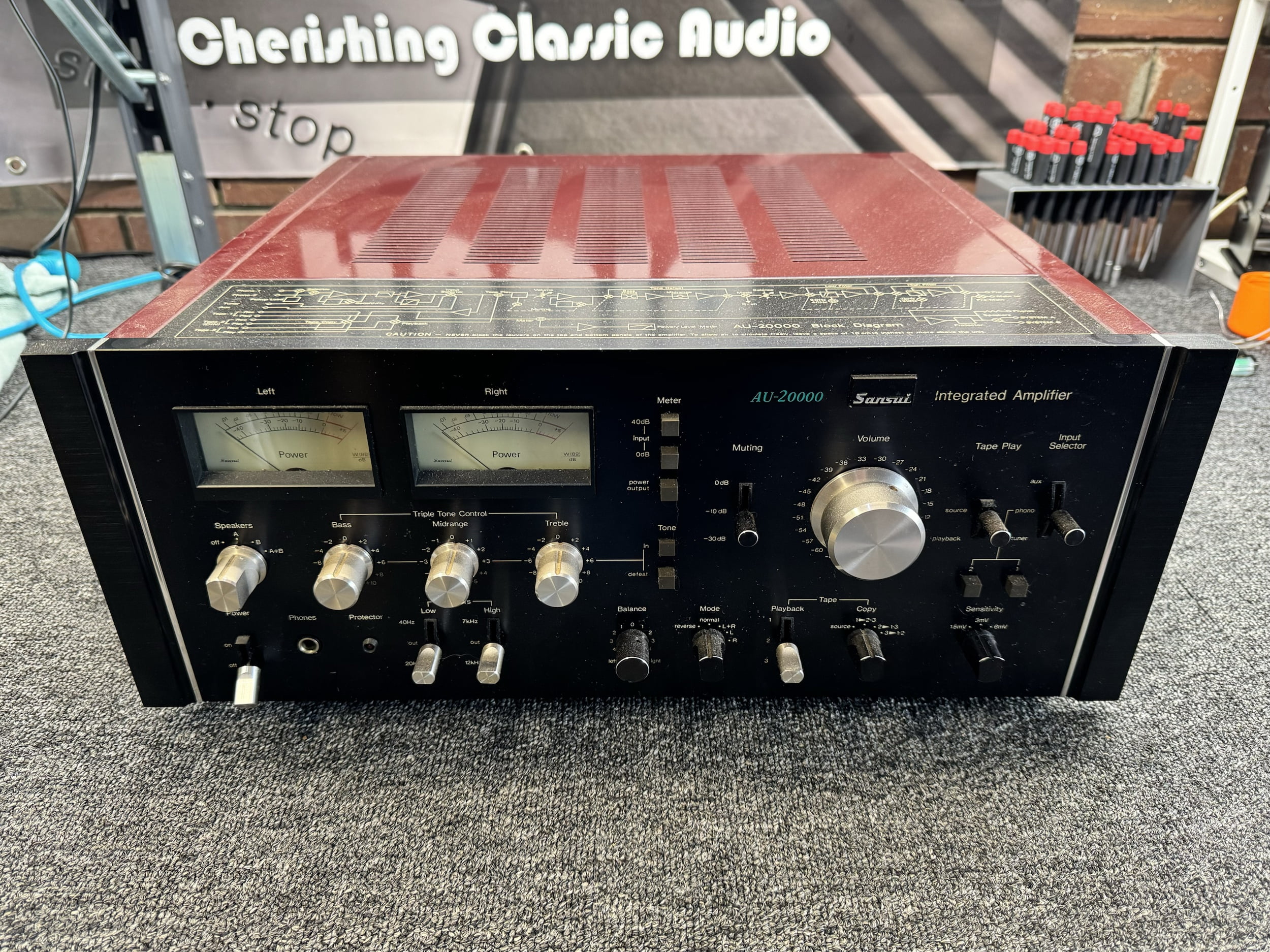
Features
The Sansui AU-20000 forms part of a range of equipment I’ve worked on and written about over the years including the Sansui AU-4900, AU-9900, AU-11000, BA-5000, etc. The Sansui AU-20000 is Sansui’s finest integrated amplifier from their golden era of manufacturing and some would argue the best integrated Sansui ever made.
The only other Sansui integrated that competes with the AU-20000 is the Sansui AU-X1/AU-X11. That’s another beast that I need to write about properly and will, soon because I completely resurrected an AU-X1 for my hardest-core Sansui collector, ‘Sansui Rob’! I reckon the AU-X1 sounds better than the 20000, but I prefer the construction and serviceability of the AU-20000. They are both incredible amplifiers though, equipment that would cost north of $10,000 AUD if there was anything like them available new.
The Sansui AU-20000 is an integrated stereo amplifier delivering a continuous 170 watts, minimum RMS, per channel into 8 ohms, with no more than 0.05 % total harmonic distortion. It is an extremely solidly built model and utilises high-quality parts throughout including superb switches, potentiometers, filter capacitors and output devices.
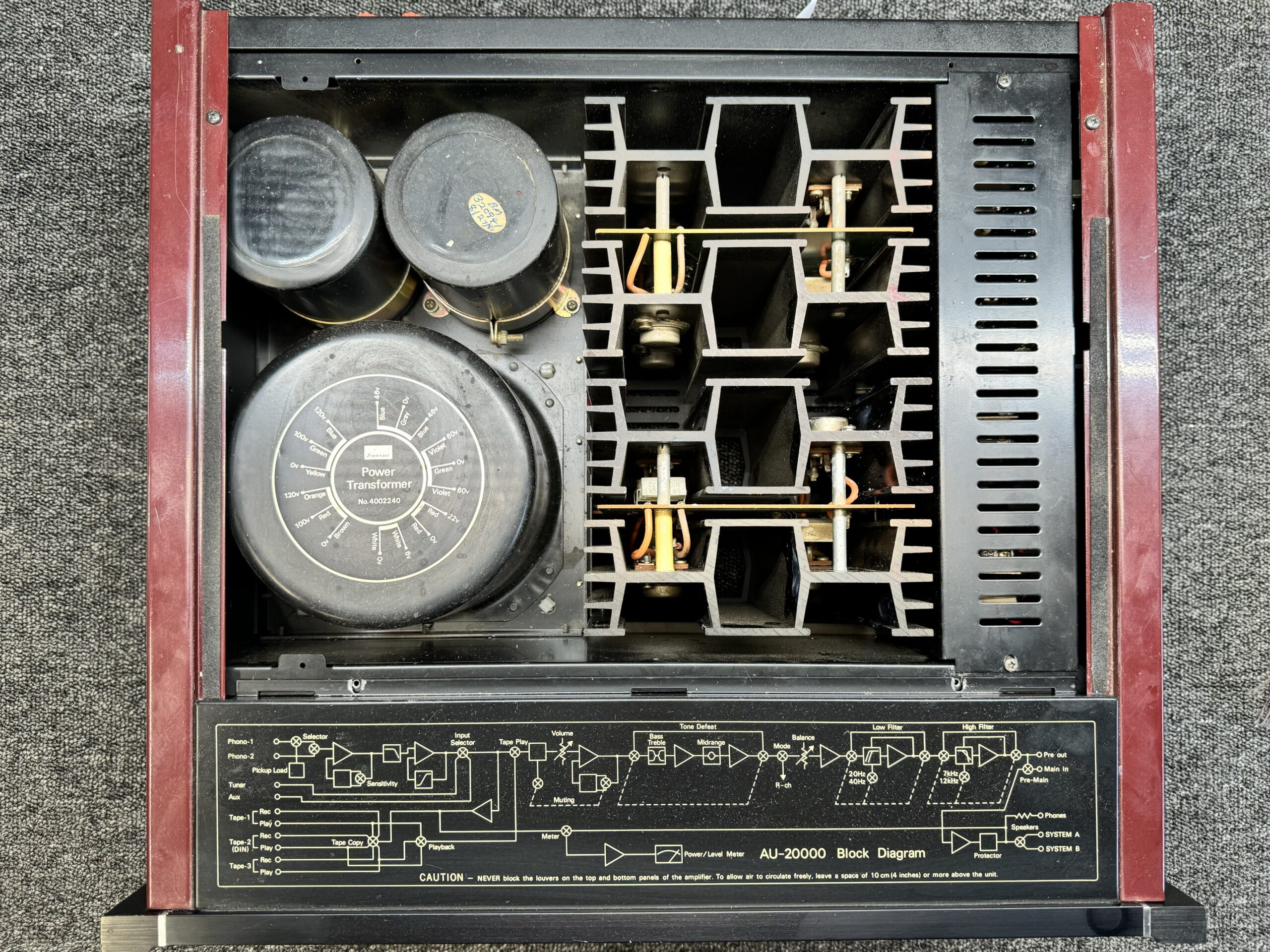
Like other statement integrated amplifiers from this era, the AU-20000 contains a high-performance MM phono preamp, headphone amplifier, tape circuits, tone controls, muting and in this case, gorgeous moving coil power meters. The AU-20000 also contains triple protection circuits covering over-temperature, DC asymmetry and outside area of safe operation (ASO) detection.
The AU-20000 features differential amps at the initial stages, yielding an improved dynamic response, for an extremely accurate RIAA equalisation curve. Selectable phono sensitivity/impedance and a versatile tape monitor circuit make the AU20000 flexible and capable of handling a variety of recording and playback scenarios.
These are high-speed class AB amplifiers with bipolar output devices, a common design architecture at the time. The AU-20000 was also part of a Japanese manufacturer push to create statement pieces and Sansui did this better than most in my opinion. The only thing lacking here is MC capability on the phono preamp but that’s OK, you can add a killer step-up transformer instead.
Sansui AU-20000 Specifications
Courtesy of HiFi Engine
Power output: 170 watts per channel into 8Ω (stereo)
Frequency response: 10Hz to 50kHz
Total harmonic distortion: 0.05%
Damping factor: 80
Input sensitivity: 3mV (MM), 130mV (DIN), 130mV (line)
Signal-to-noise ratio: 70dB (MM), 80dB (DIN), 80dB (line)
Channel separation: 55dB (MM), 60dB (line)
Output: 130mV (line), 30mV (DIN), 0.7V (Pre out)
Speaker load impedance: 4Ω to 16Ω
Dimensions: 460 x 178 x 400mm
Weight: 23.6kg
Year: 1976
Issues & ‘Recappers’
Like many of the complex jobs I work on, this amplifier had been elsewhere before I got to work on it, not surprising given its age. There are a few recappers here in WA and this AU-20000 unfortunately visited one of the worst of them before coming to me. This business features prominently in the Hall of Shame and just lost a significant court case here in Perth for ruining an owner’s valuable hi-fi equipment, earlier this year.
The owner of the AU-20000 has been a customer of mine from the early days, so why did this irreplaceable amplifier go elsewhere before I saw it? Because I was fully booked when the customer wanted it looked at. I understand that waiting can be a problem, but this Sansui AU-20000 repair perfectly illustrates why waiting for someone you trust is a very good idea. Everything I’ve ever said about the right approach and the right people being so important is encapsulated in this and many other similar examples.
These days, I generally reject equipment that has been to the usual recappers, including the individual who worked on this one, (here’s why) so please don’t be offended if I decline to help with a piece of equipment. In some cases though, where the stakes are higher like with this ultra-rare AU-20000 and for customers like Shaughan who I know won’t hassle me to get the work done, I am happy to make an exception.
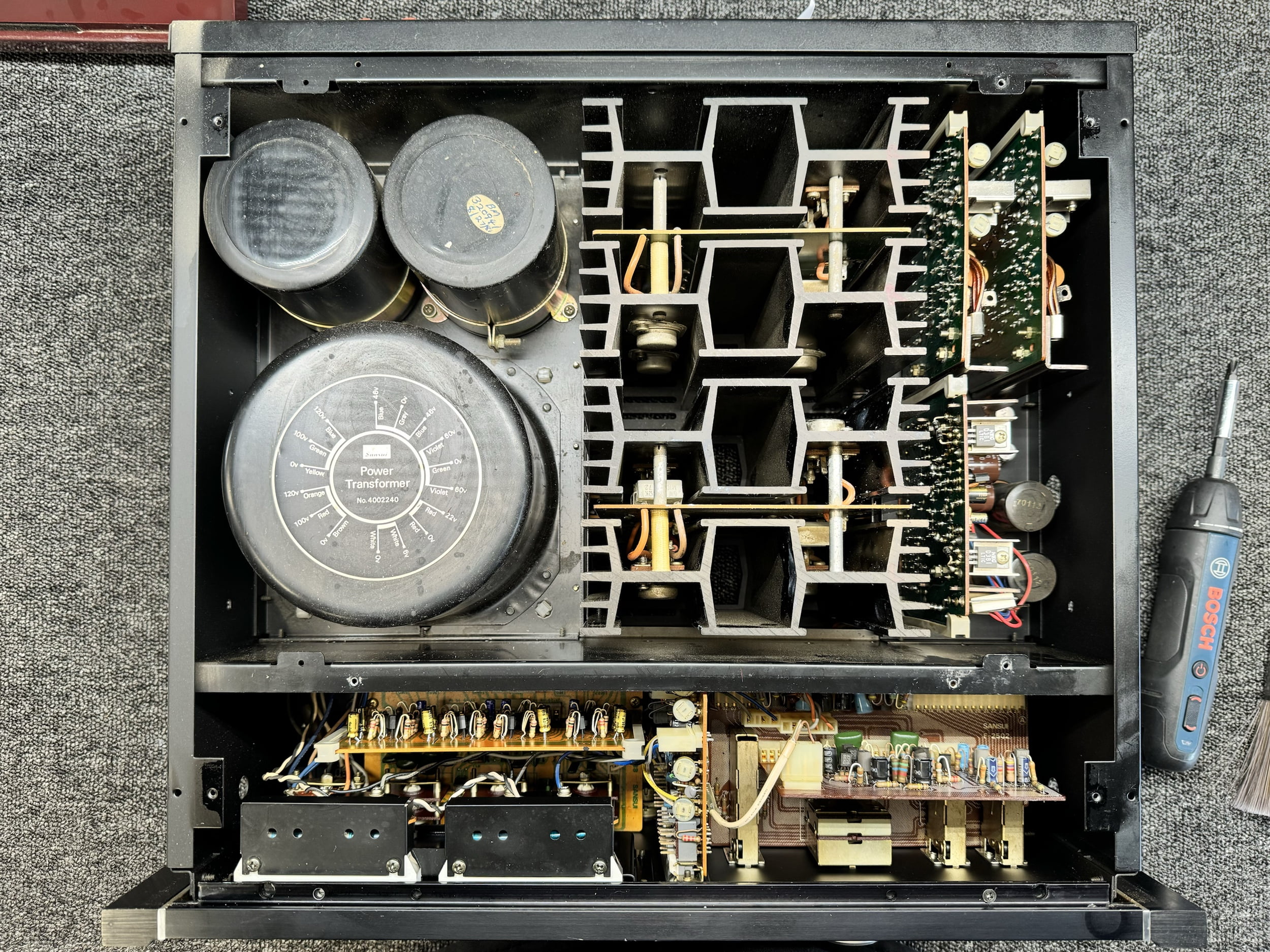
This amplifier went for repair with issues and came back with a bunch of new capacitors, many original dead capacitors in harder-to-reach places, and failed shortly thereafter, never again coming out of protection until I repaired her, in September 2024.
On this point, and something I always mention because it is very important to understand: recapping rarely solves much or even comes close to the totality of work needed on an amplifier like this, yet many think this is all that needs to be done.
Remember, this AU-20000 had been recapped (sort of) and yet it was completely broken and unusable. Recapping may be part of bigger-picture remedial work, but in essence, it’s like replacing the brake pads on an old car – worth doing if done well, but only a small fraction of what likely needs to be done.
On the other hand, poorly recapping something like a Sansui AU-20000, and introducing low-quality contact cleaners, damaged pads and traces, and the other gremlins so often seen when recappers get hold of gear like this guarantees to introduce a bunch of problems that were not there originally.
I cannot overstate the significance of this one point and if it’s all you take away from this article, I’d be happy with that. Poor work as we see here means you’ll have the original unsolved issues, plus a bunch of new issues on top of that. This is exactly what happened in this case.
Key issues with this Sansui AU-20000 included:
- Amplifier not coming out of protection
- Various DC faults caused by bad caps and leaky/noisy transistors
- A circuit integrity fault in one of the amplifier modules
- Mismatched, non-complementary output devices in that module
- Heavily contaminated and noisy volume potentiometer, card-edge connectors etc
Repair
Sorting out the issues with this Sansui AU-20000 follows a path similar to that which I follow in all such cases: clean the amplifier, remove, examine and rectify issues with all boards and troubleshoot any remaining issues, once all the basic maintenance is complete.
I was able to resolve a bunch of dead capacitor, polychloroprene glue and dirty connector issues fairly quickly. The protection fault and leaky semiconductor faults took longer to resolve, but we did, resolving all issues with this stunning piece of hi-fi history. Let’s go!
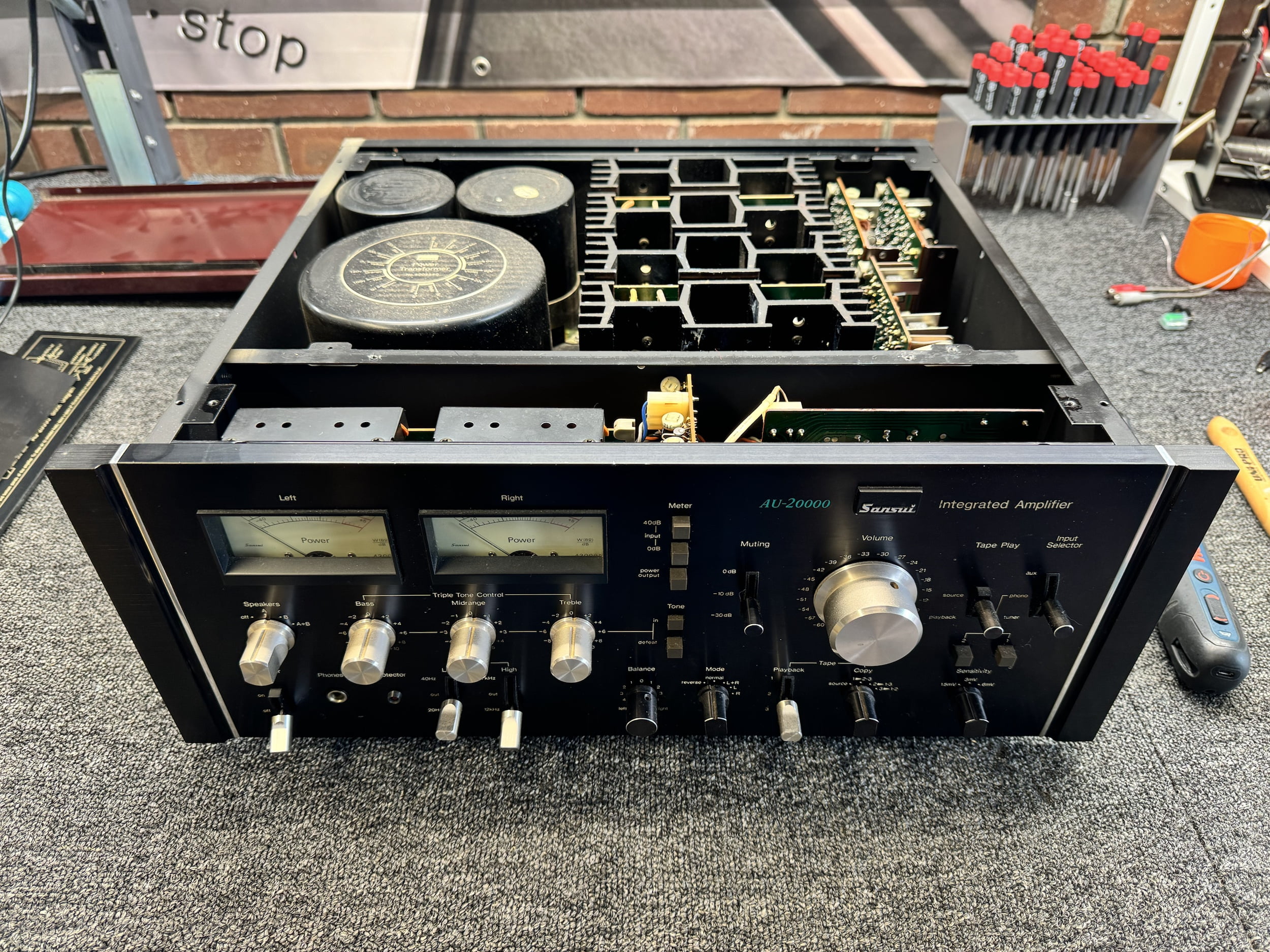
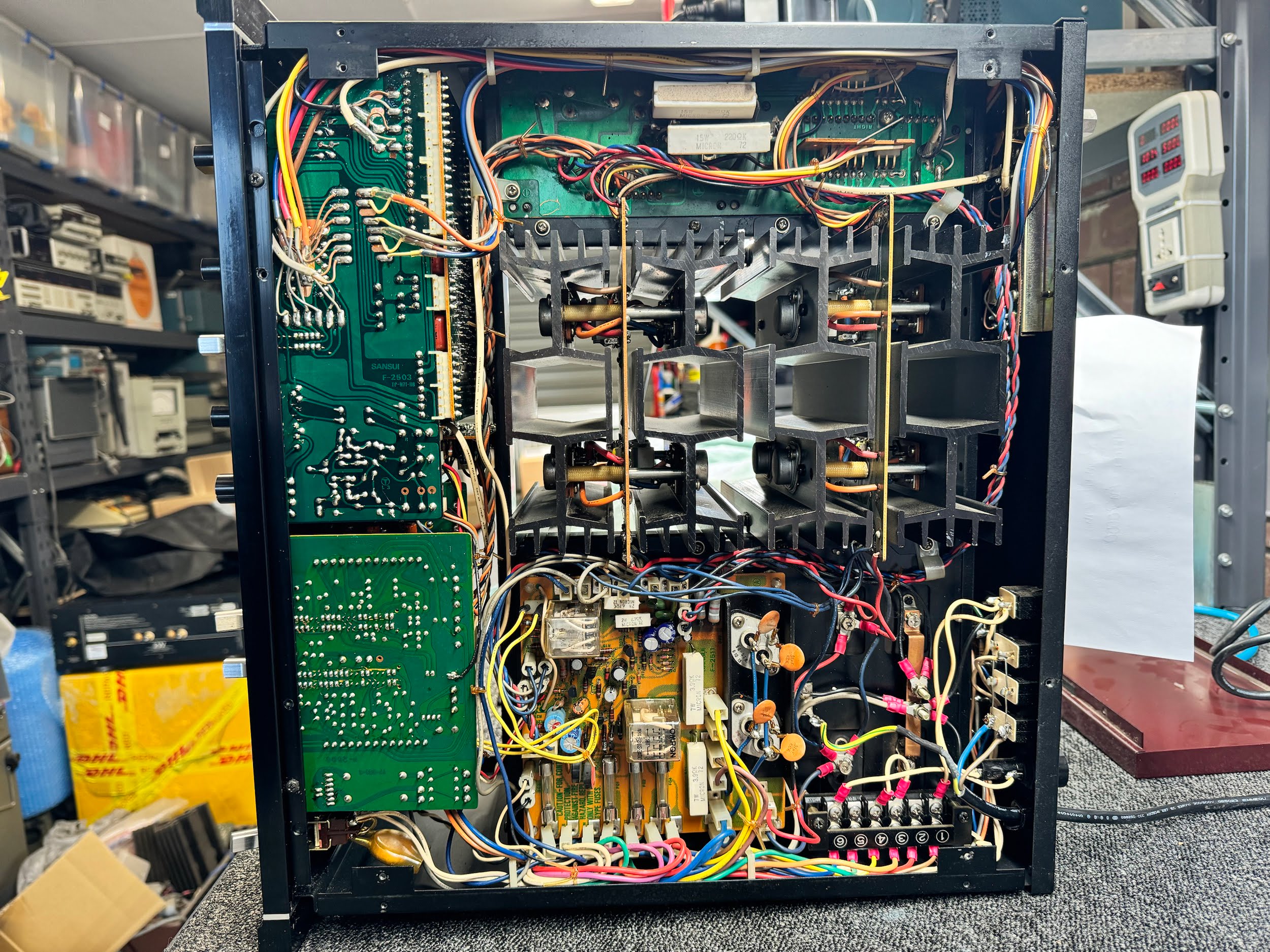
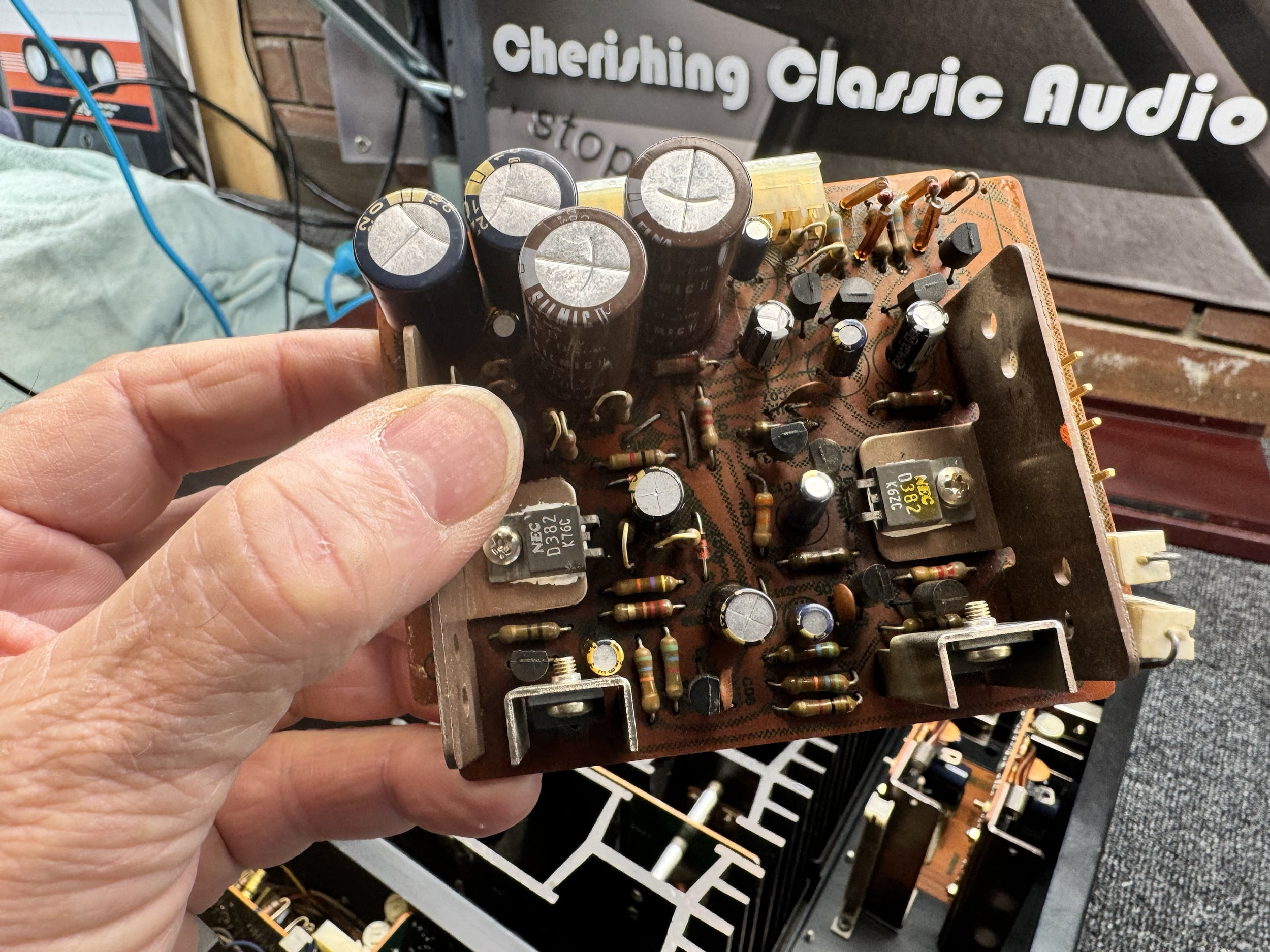
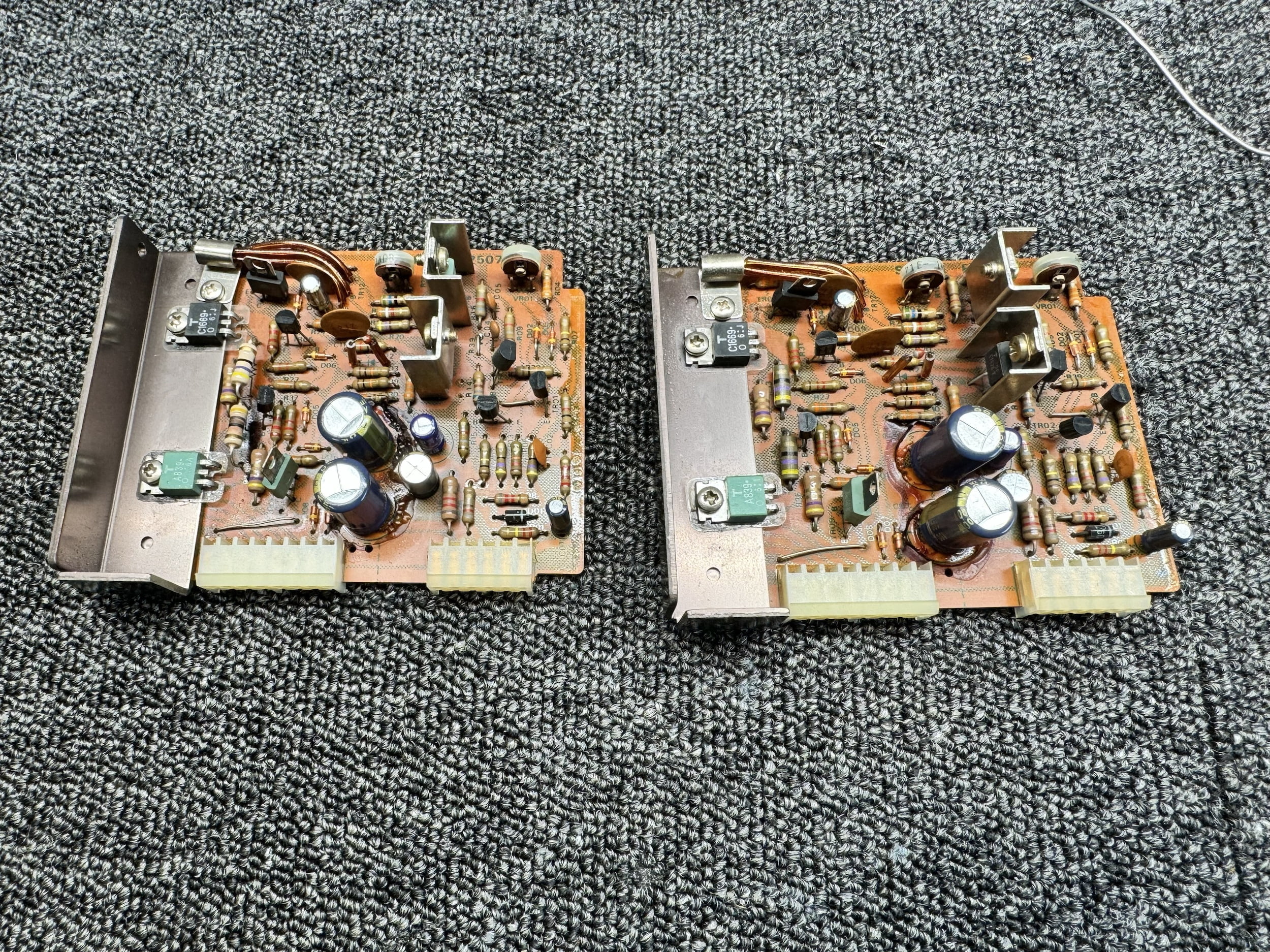

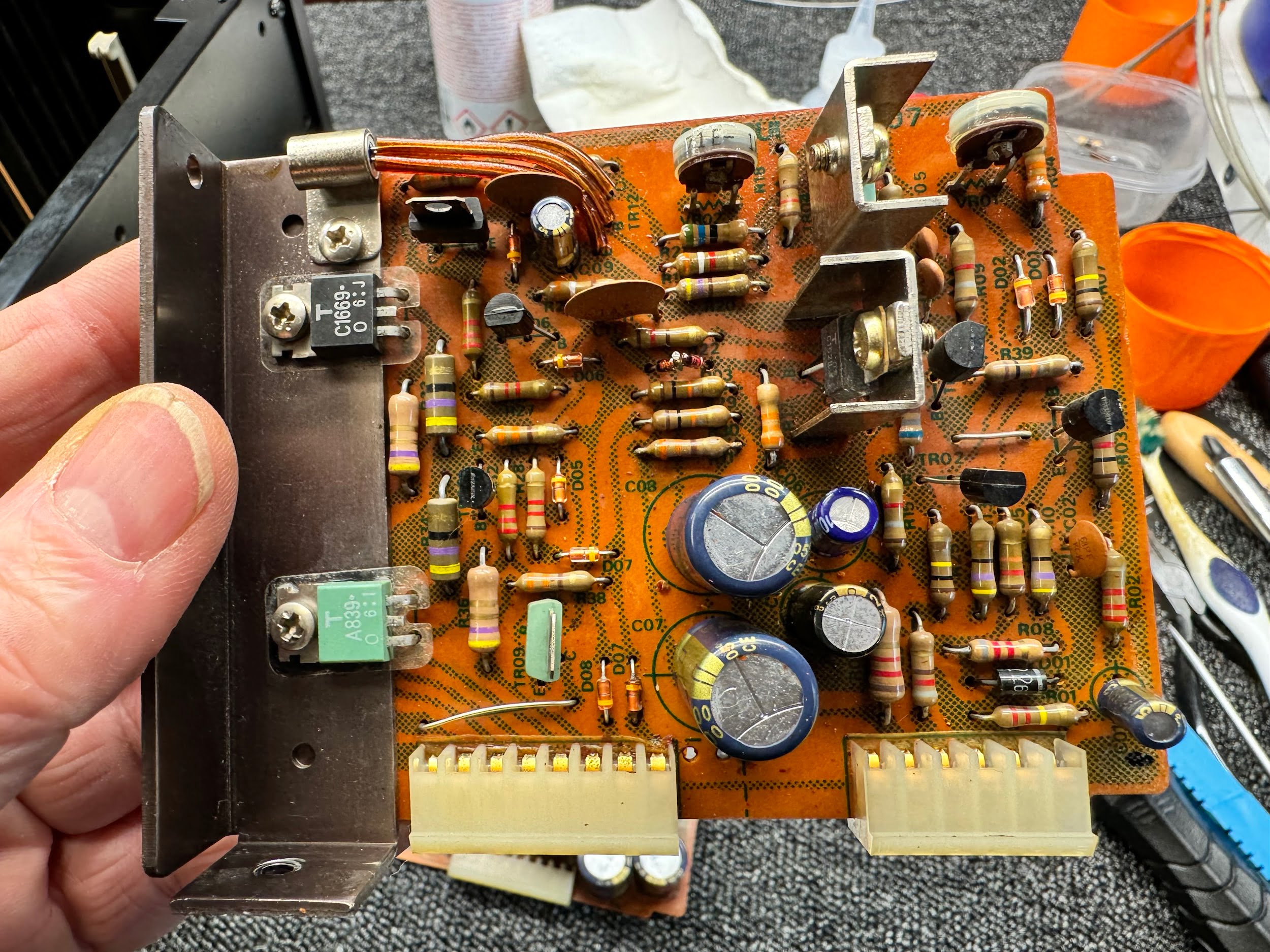
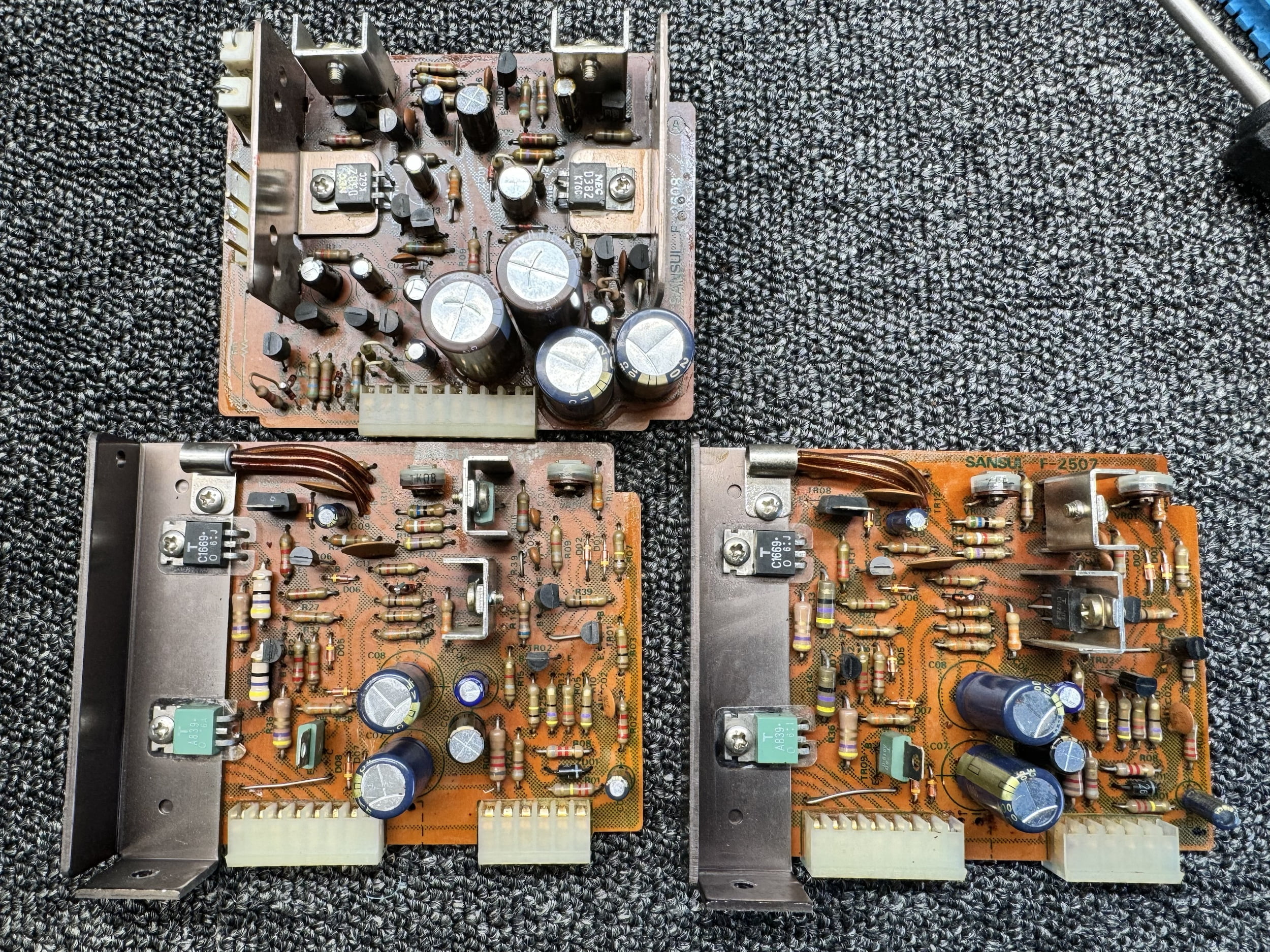
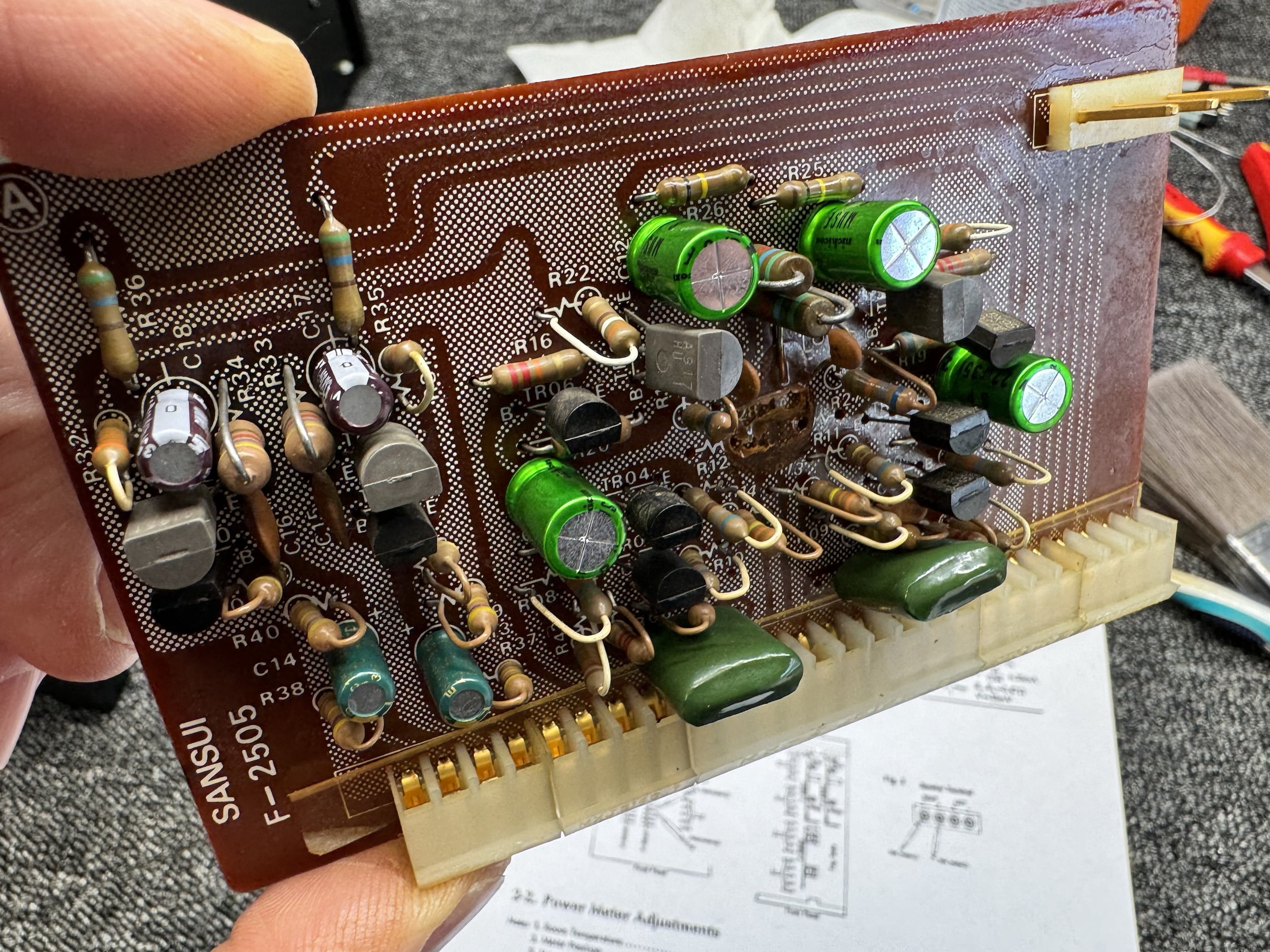
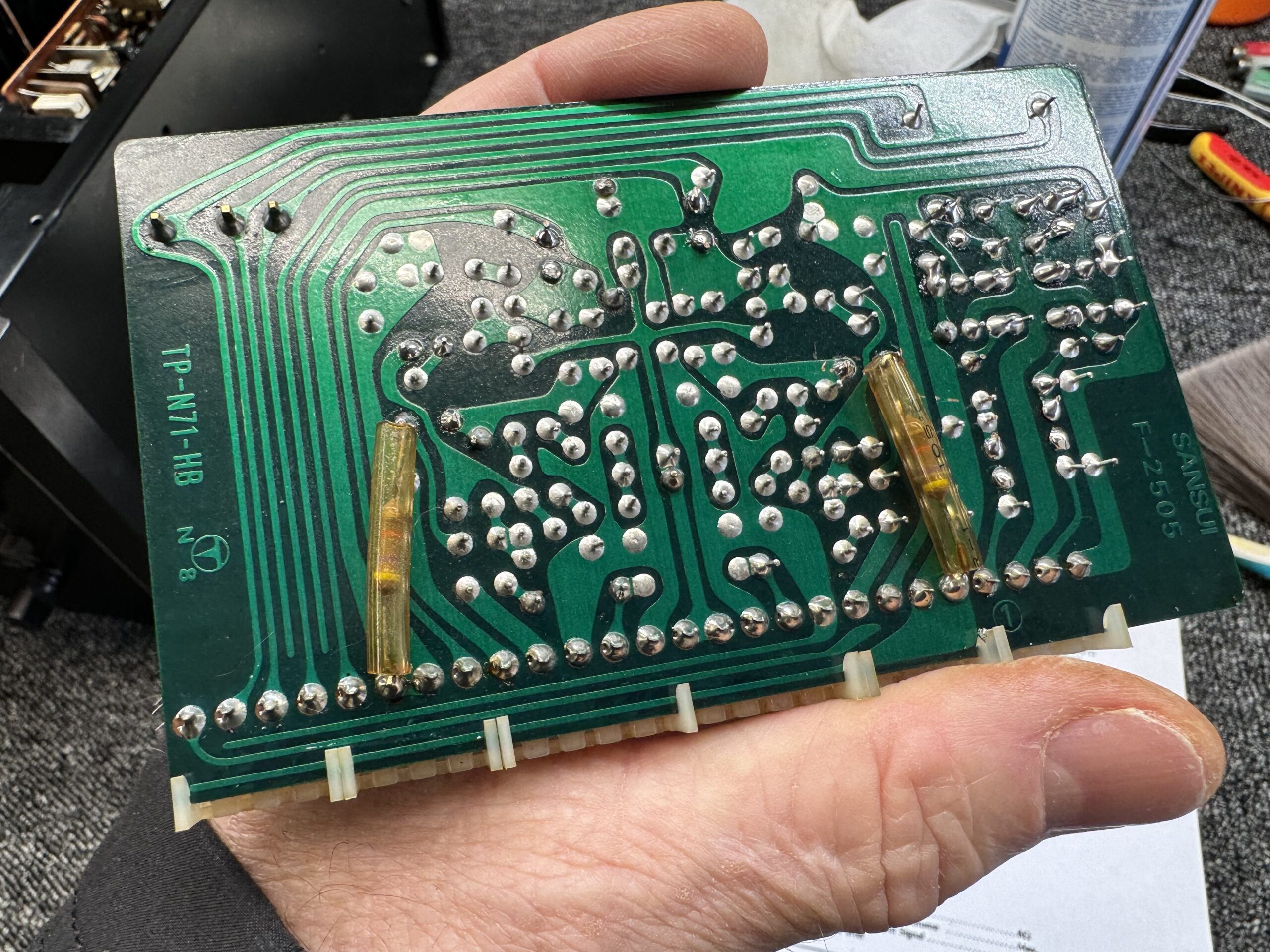
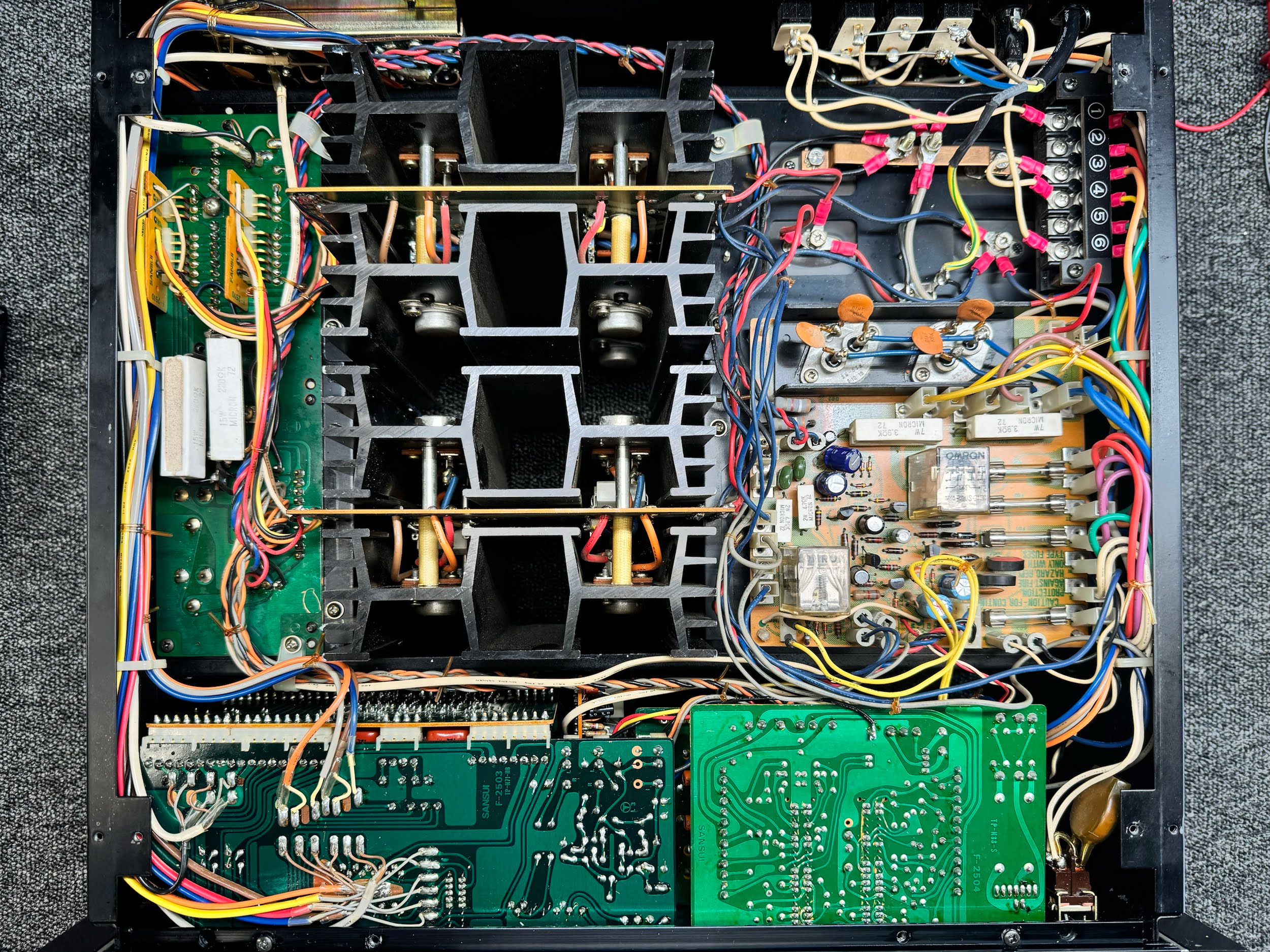
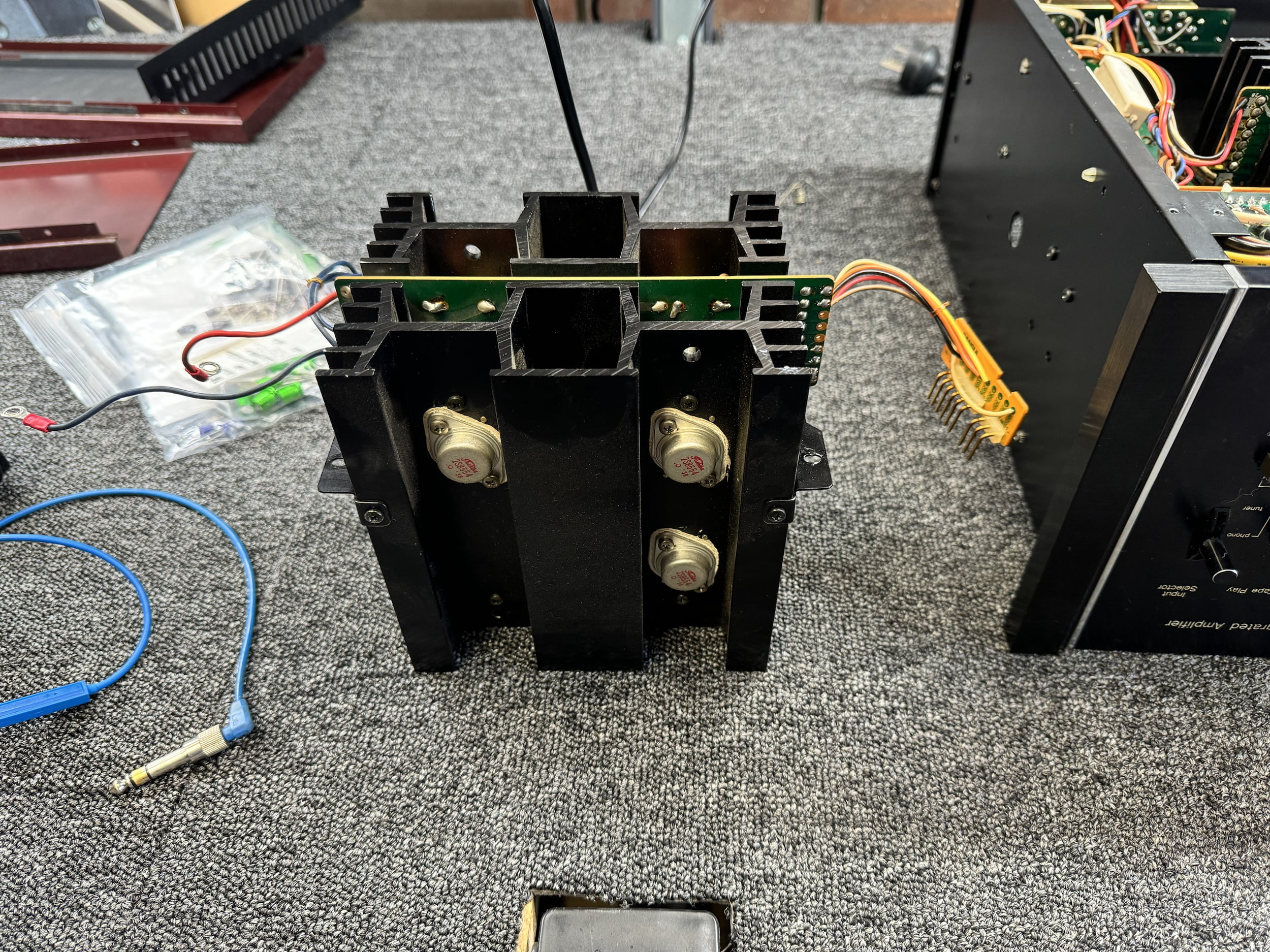
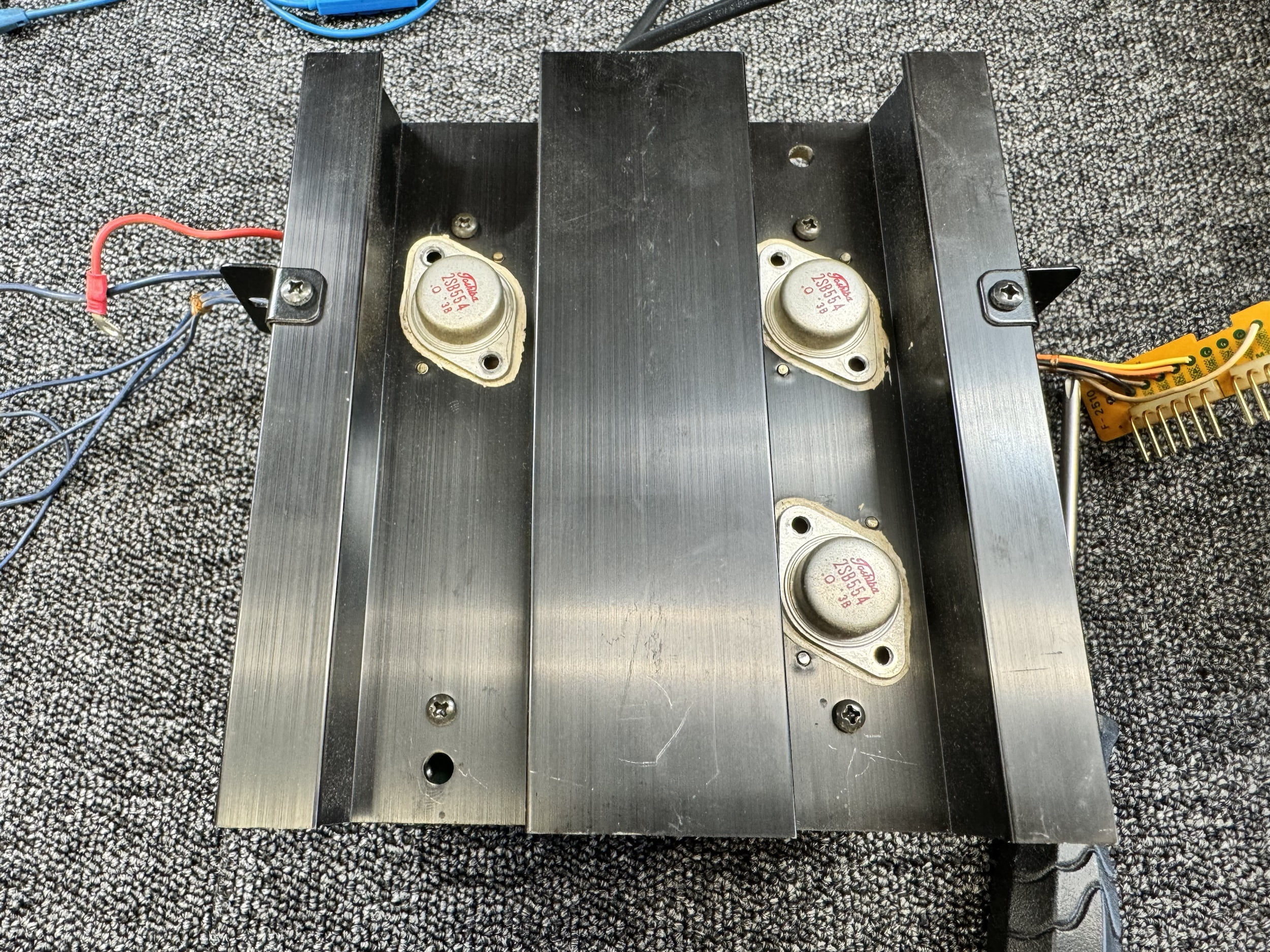
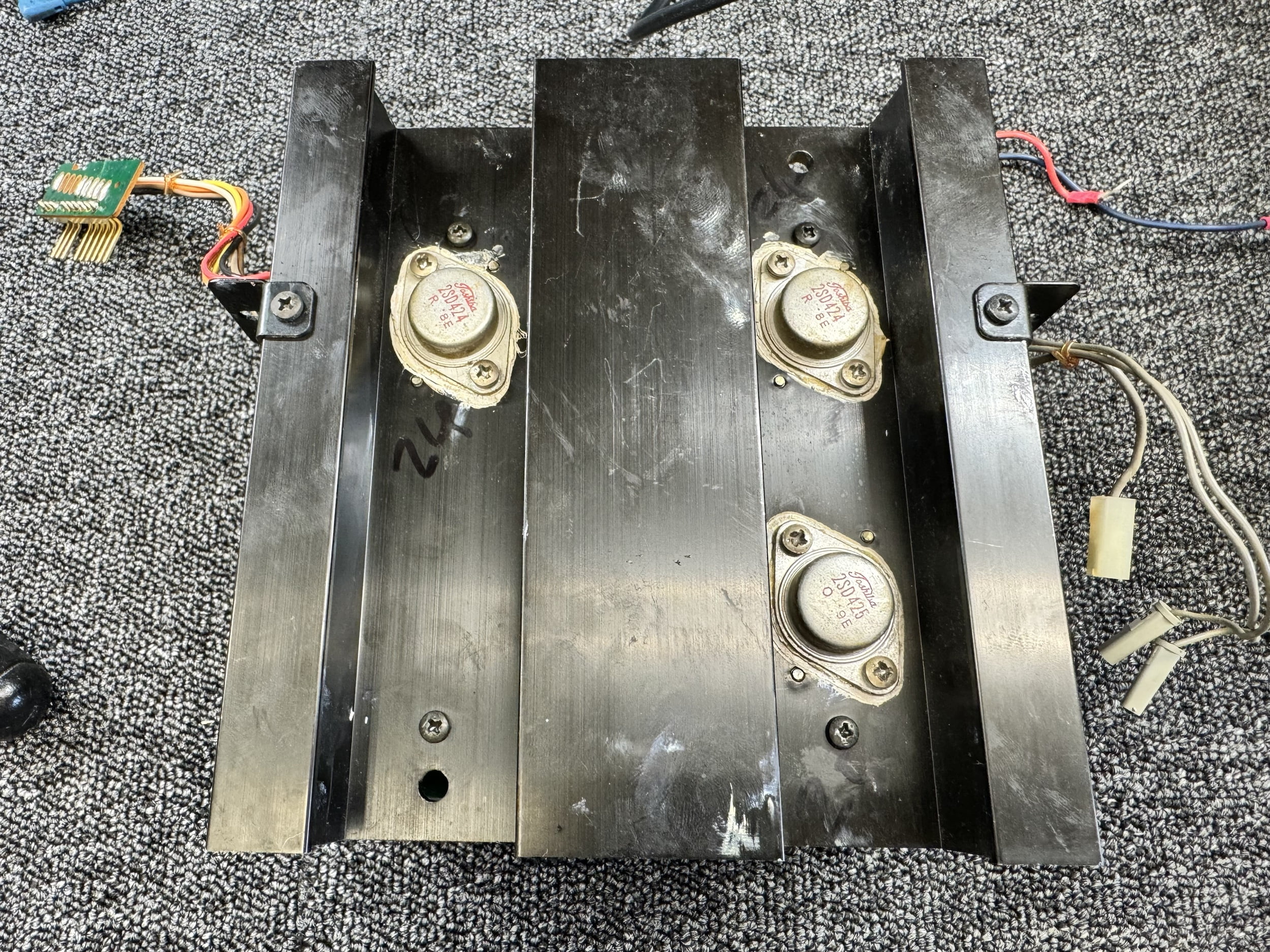
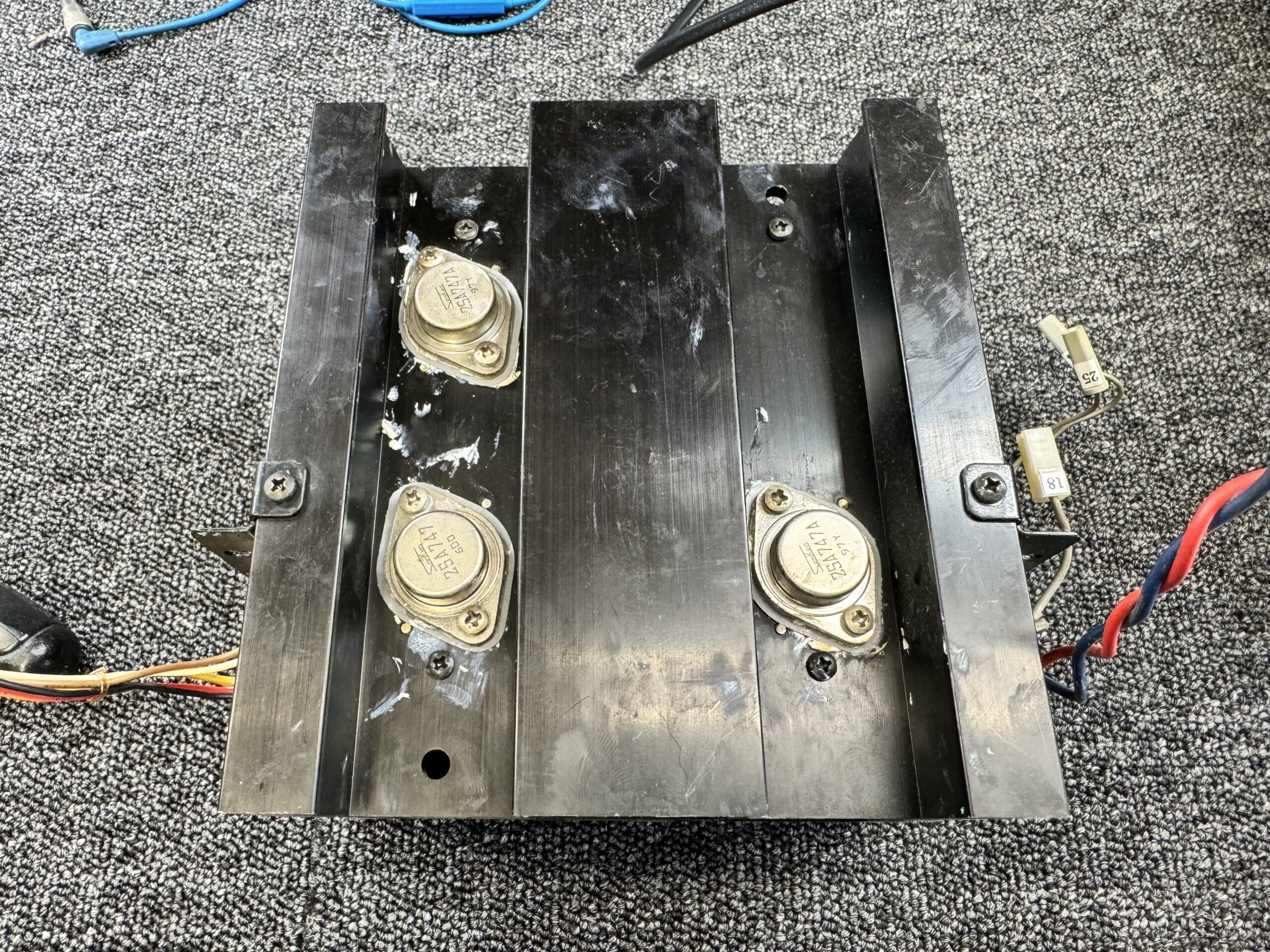
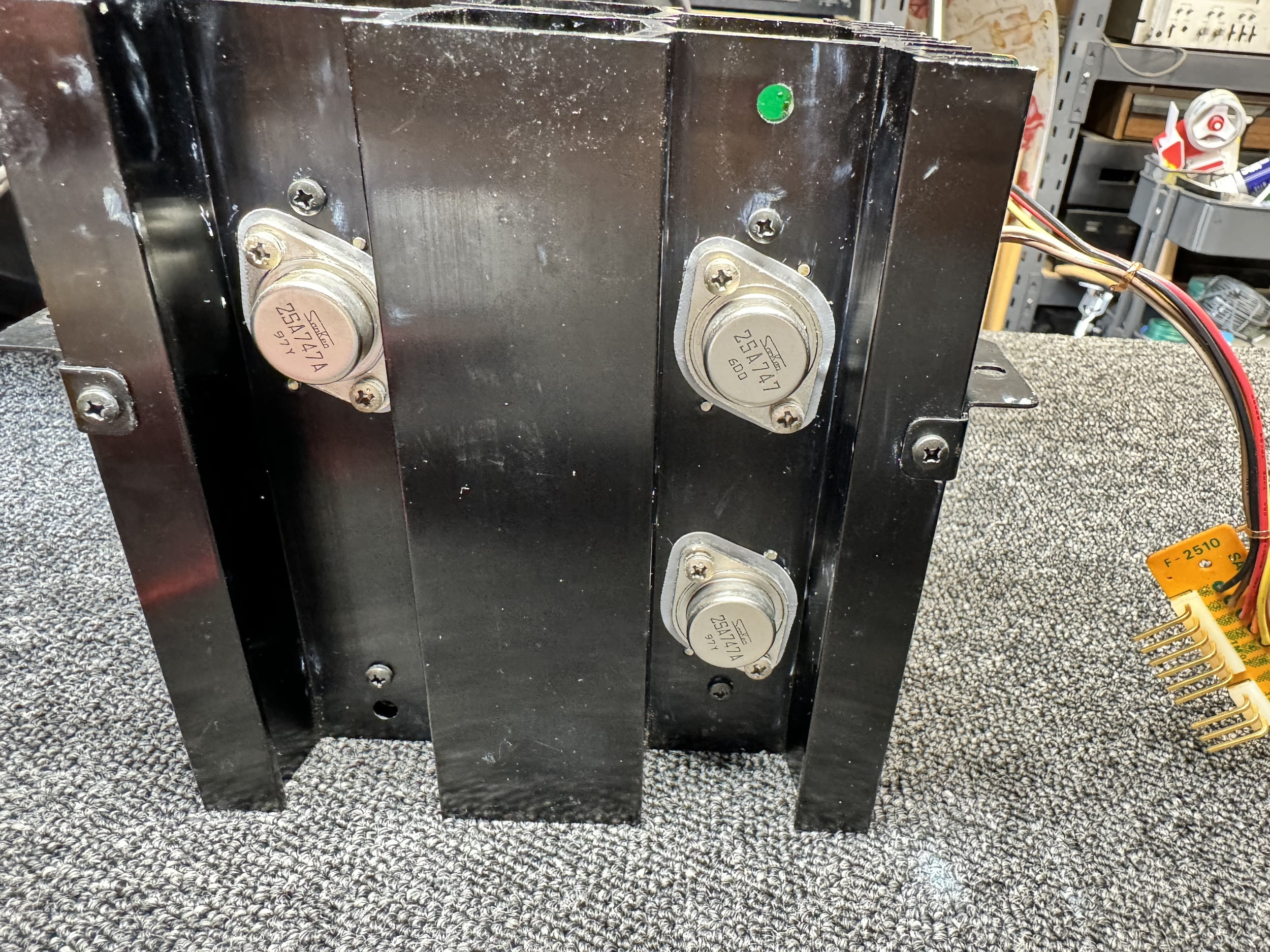
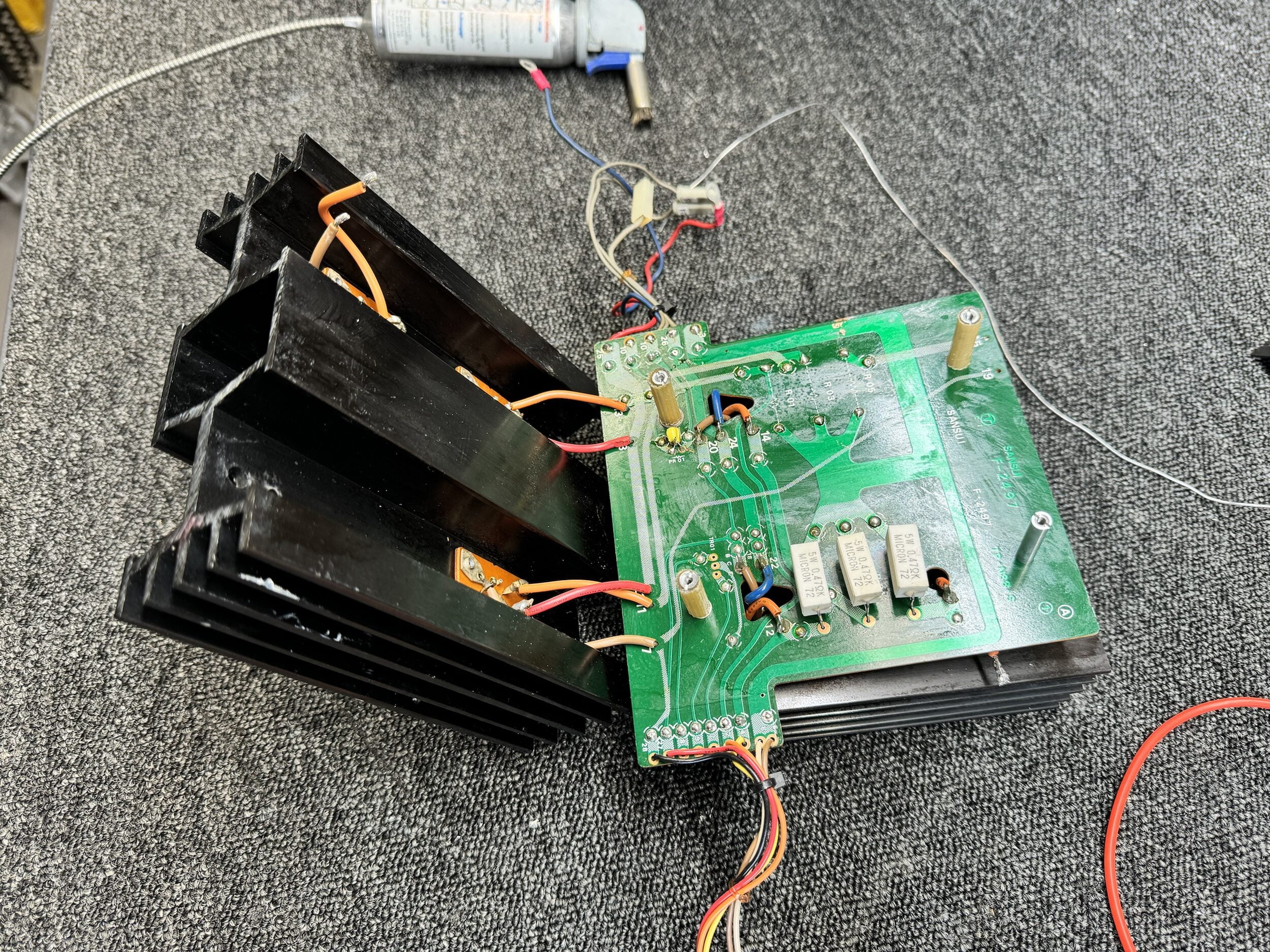
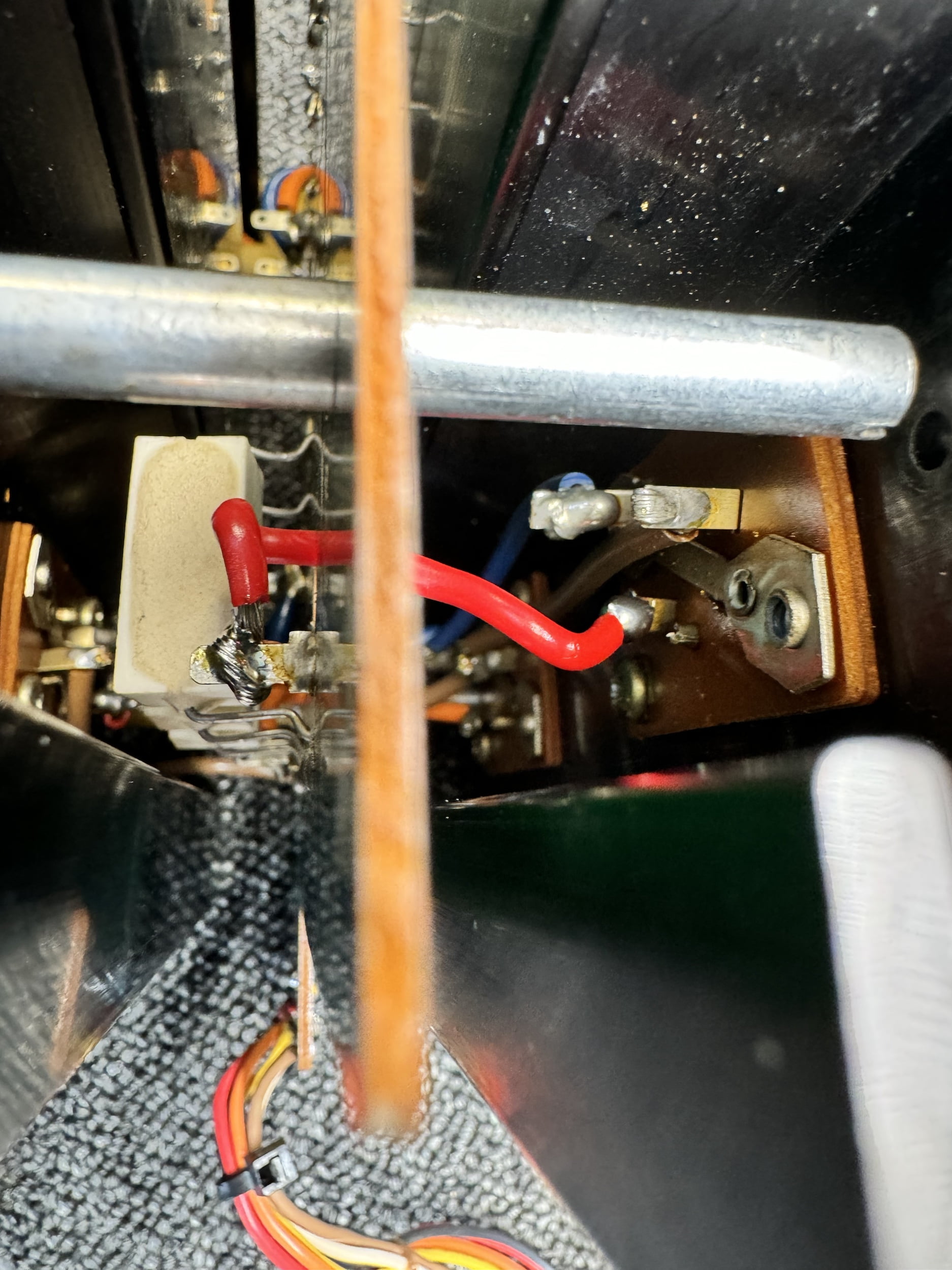
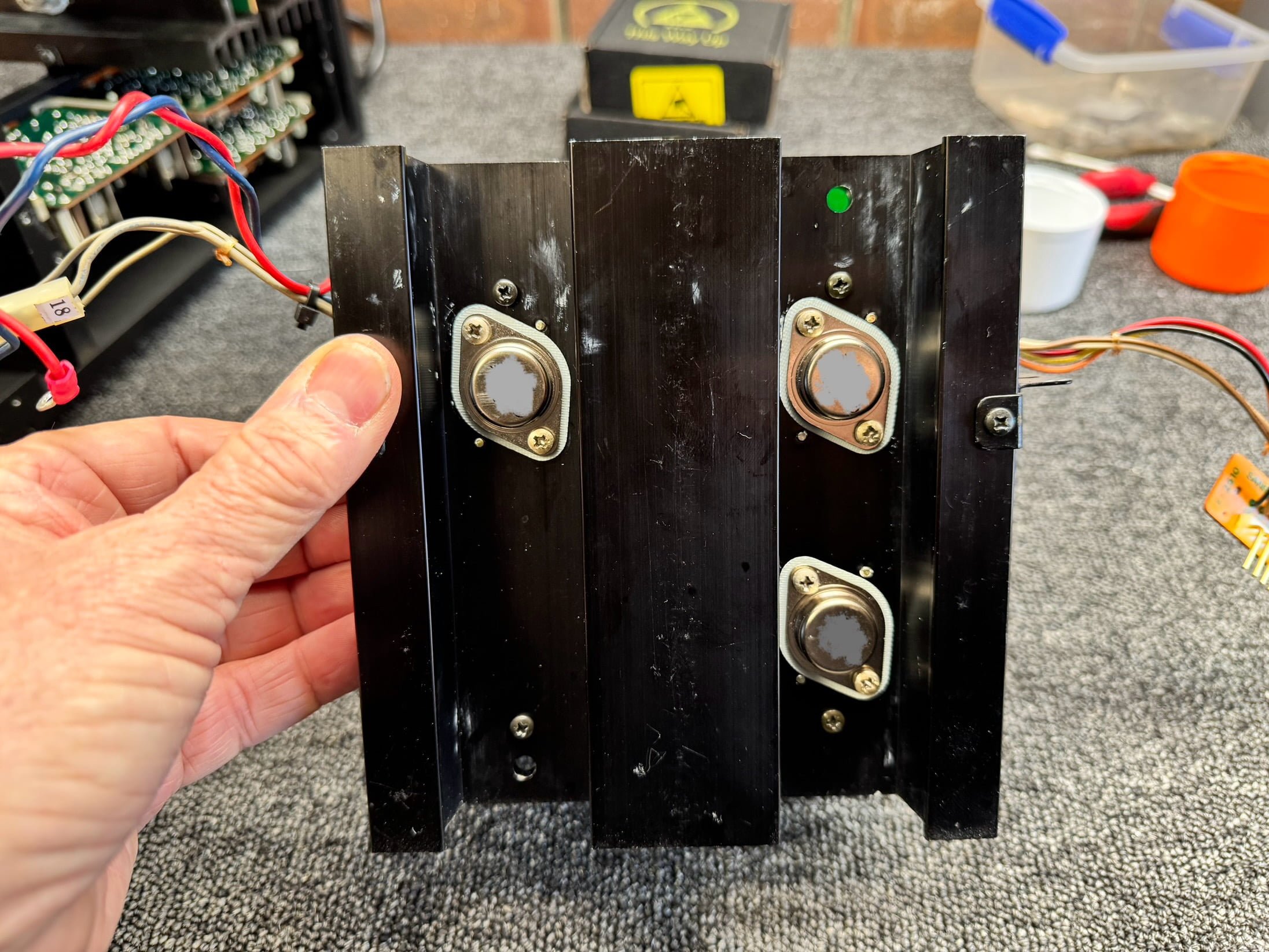
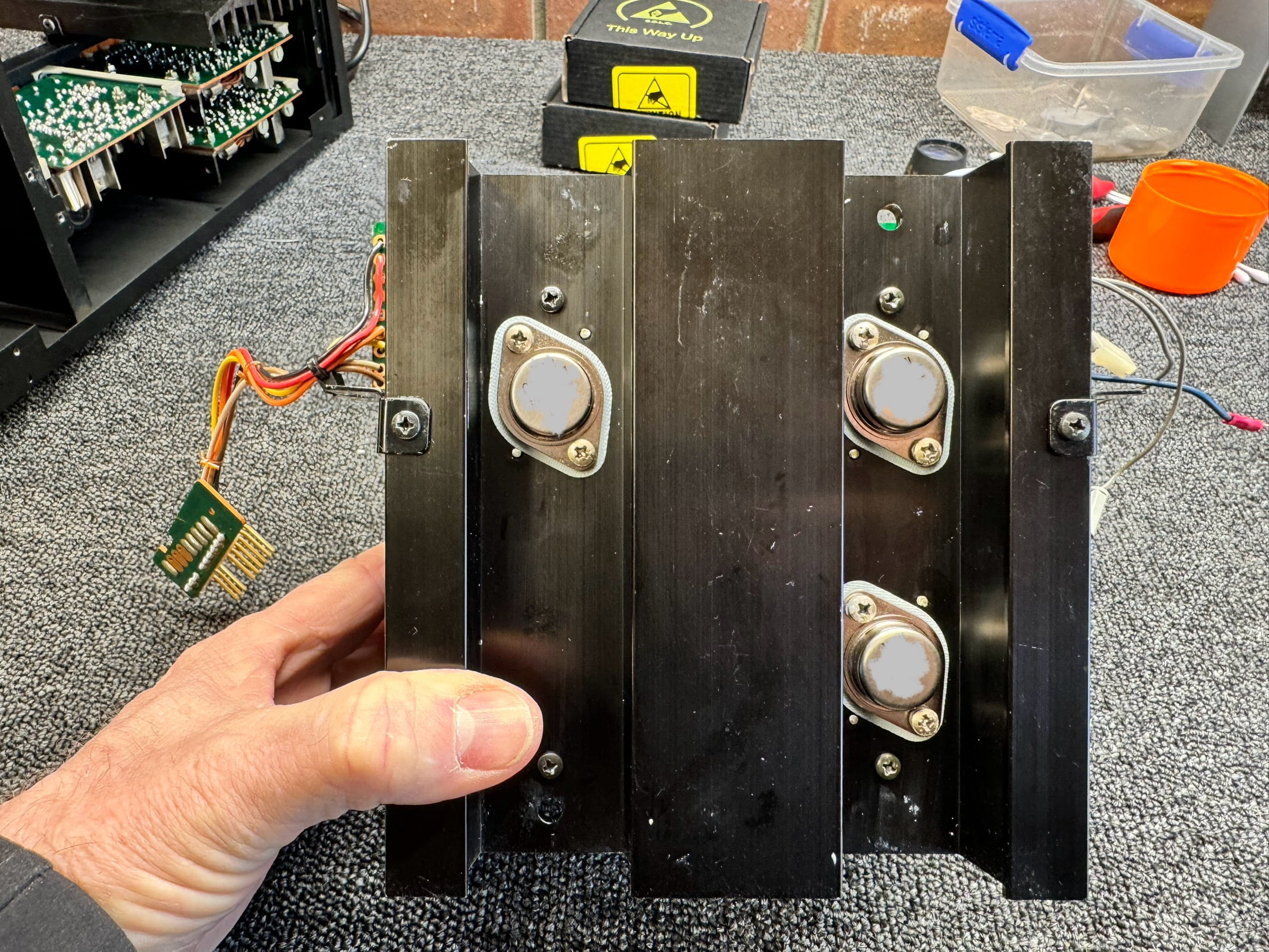
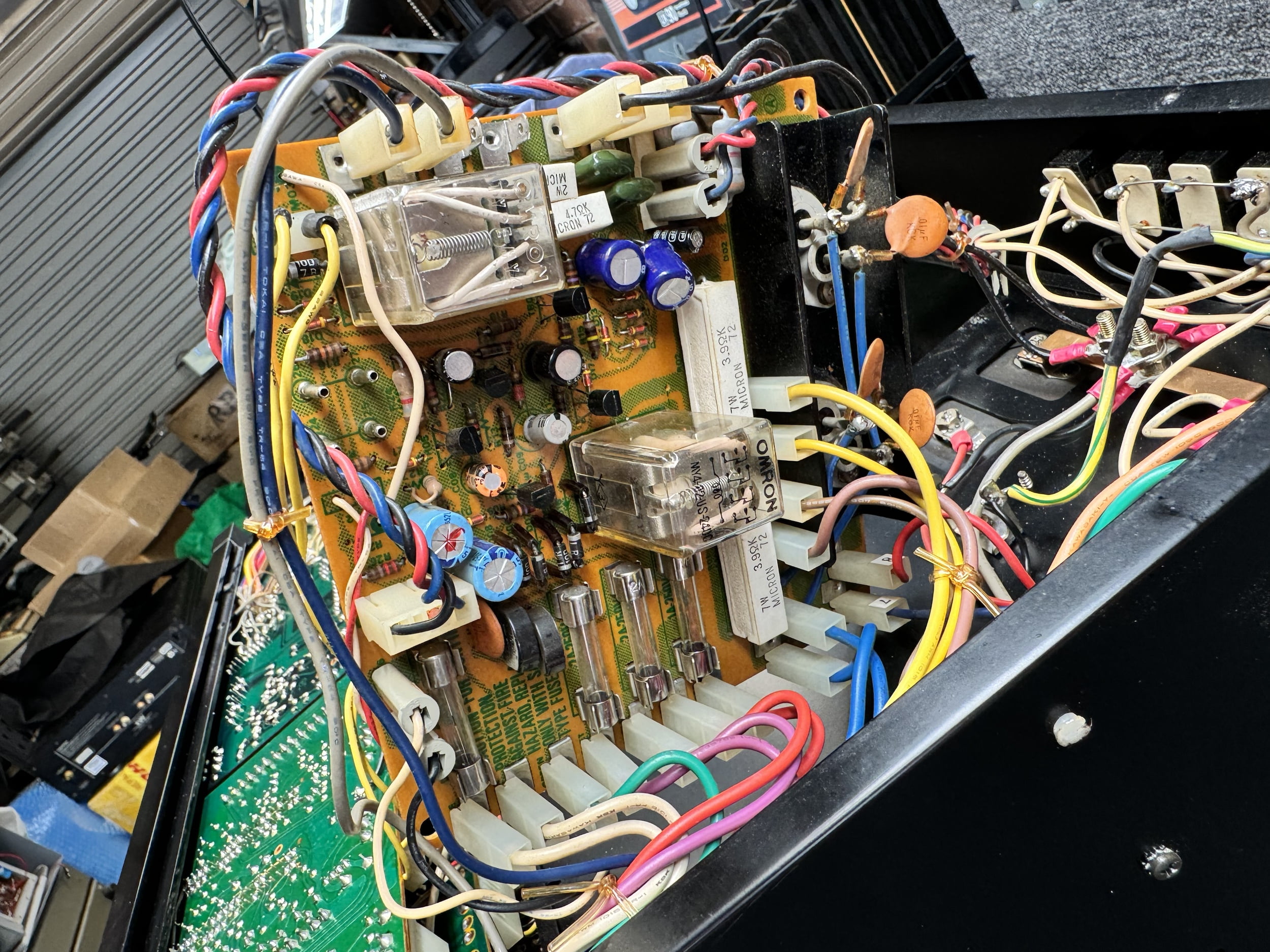
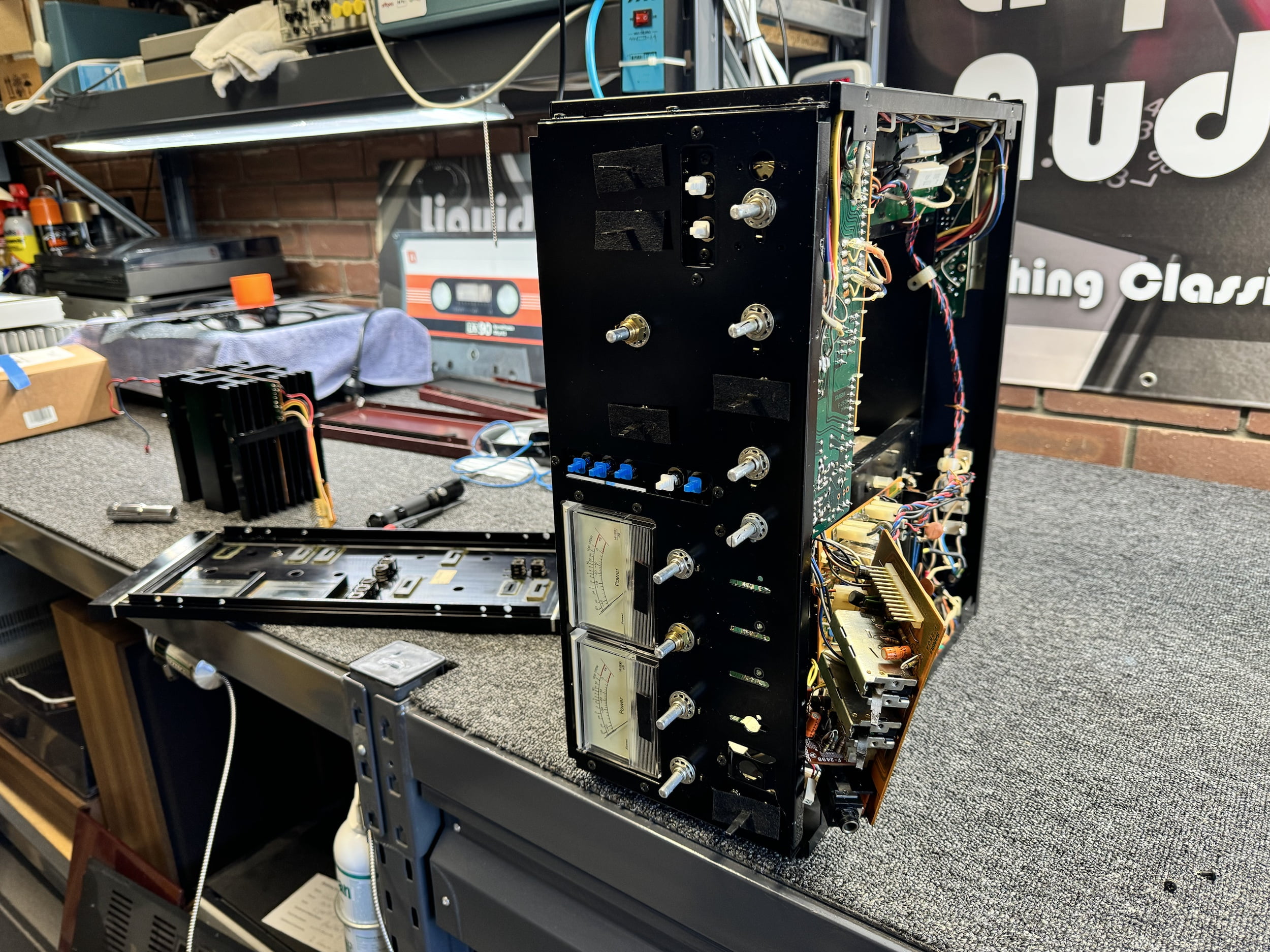
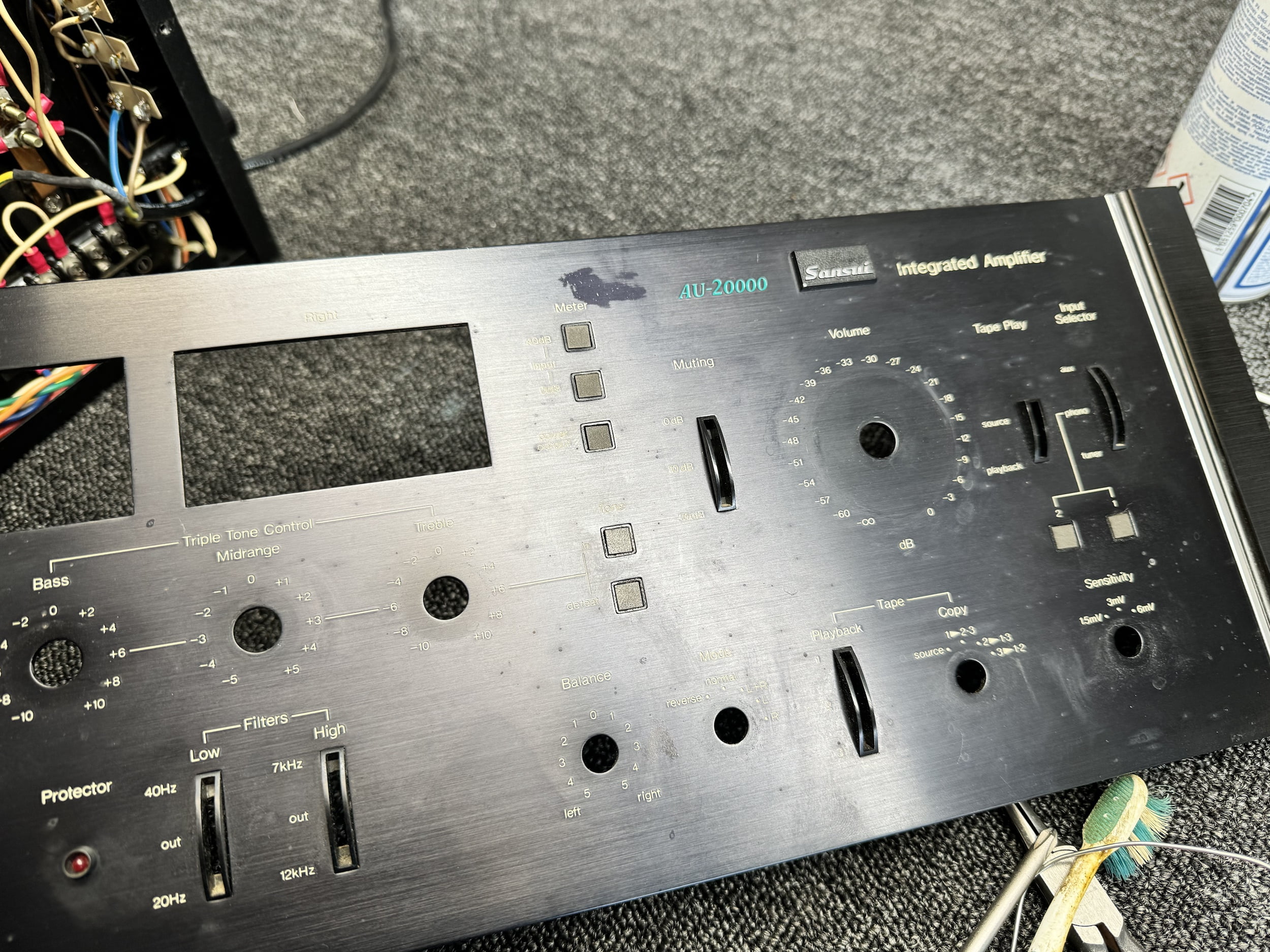
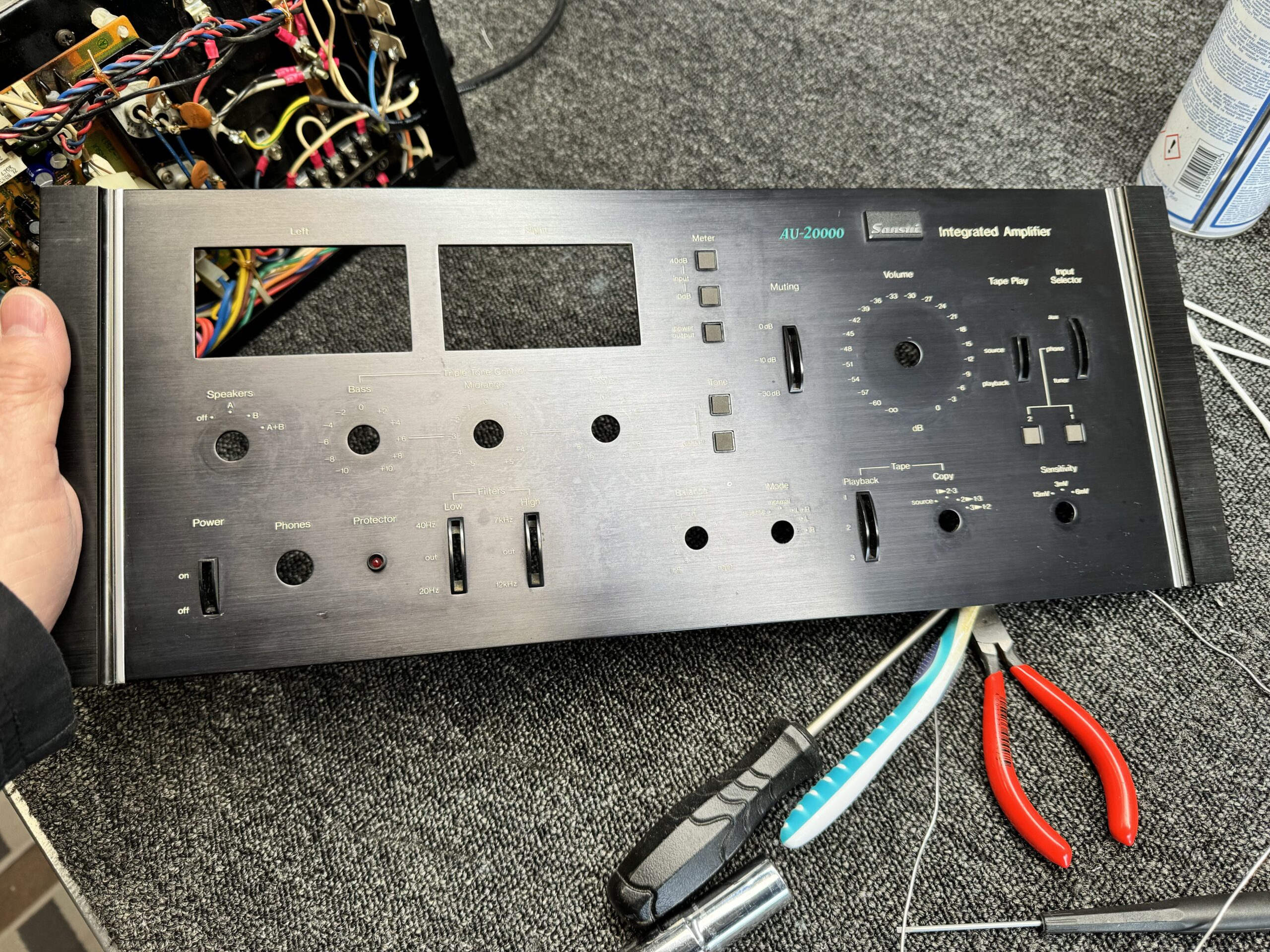
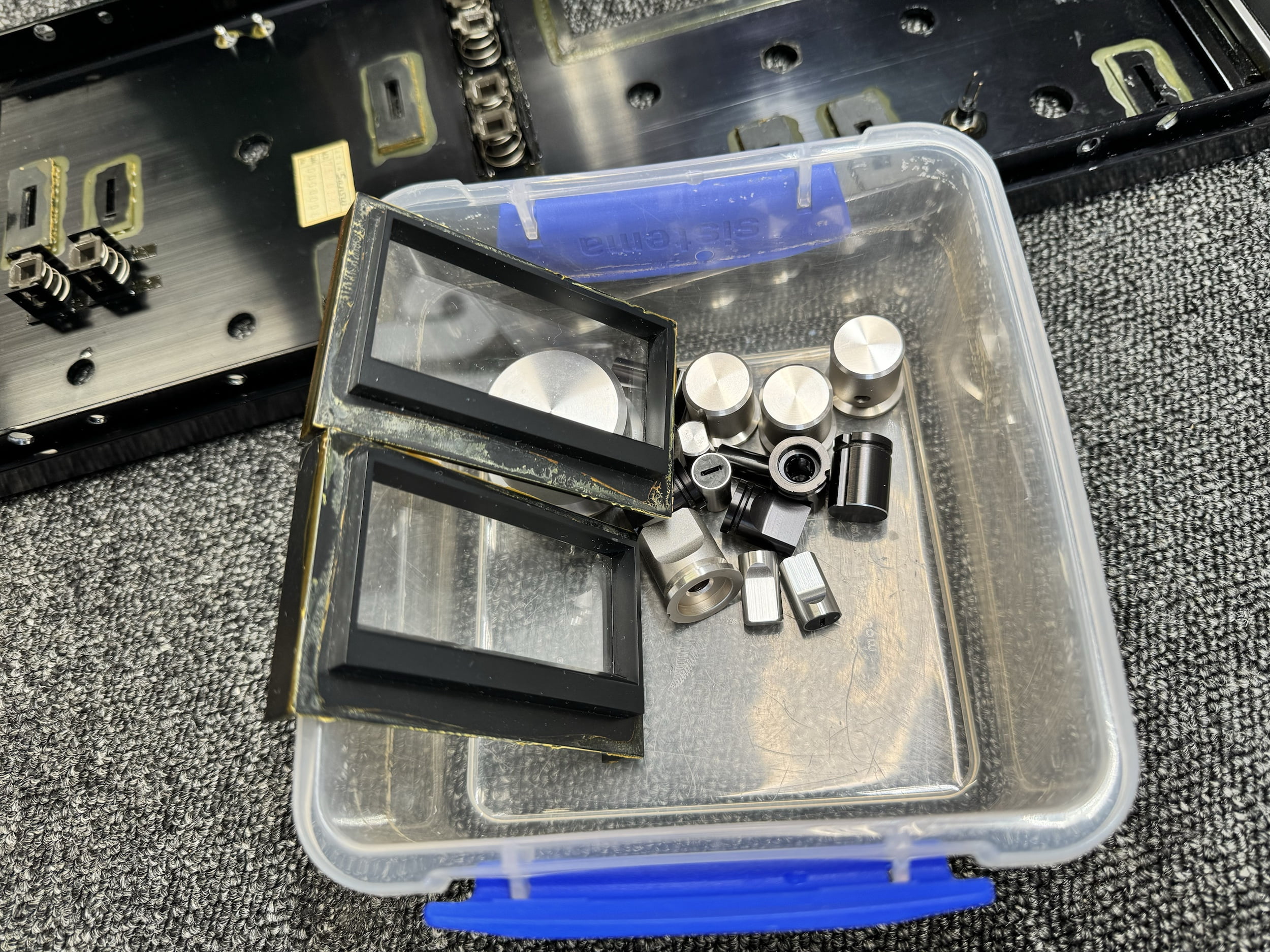
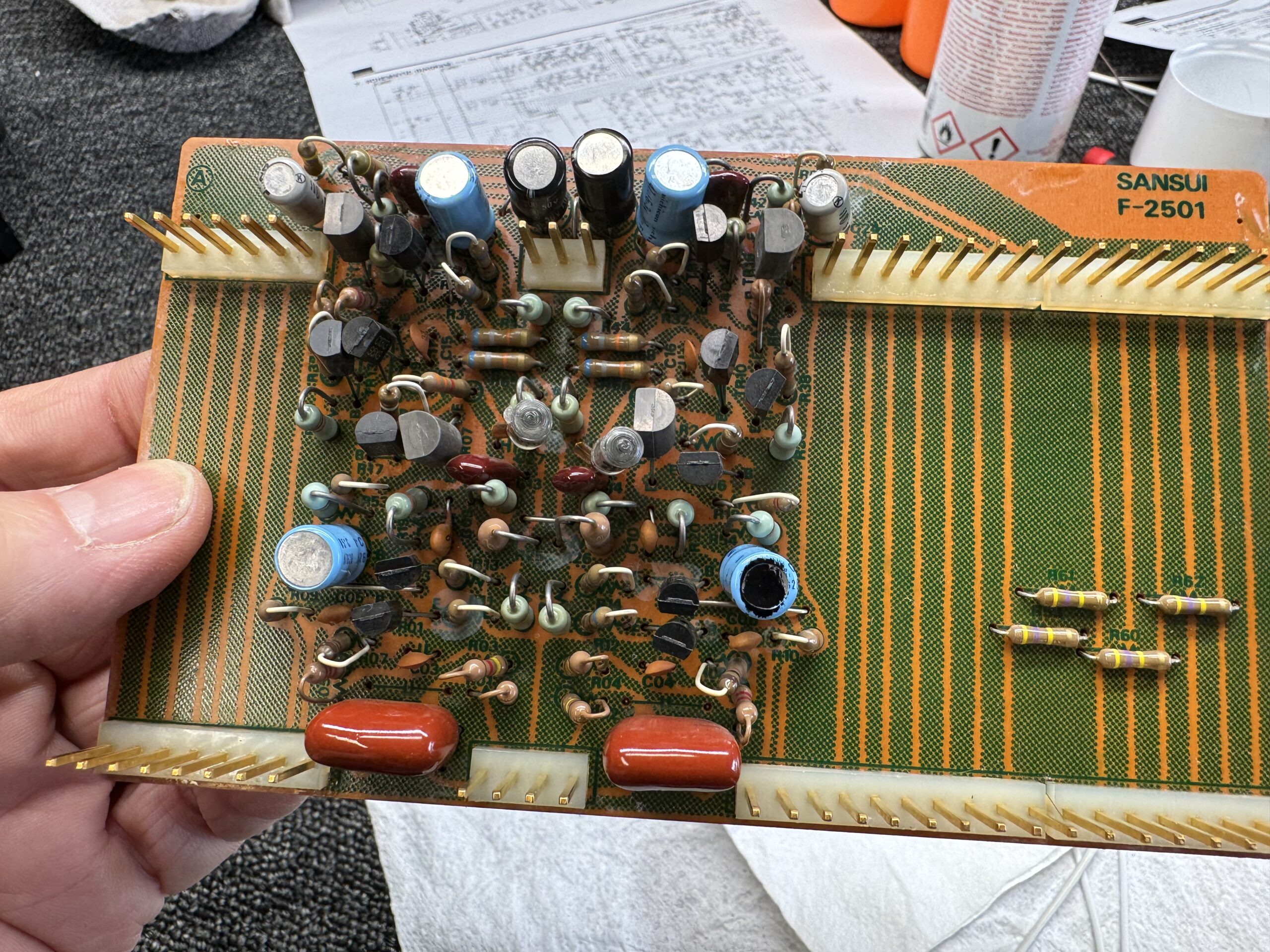

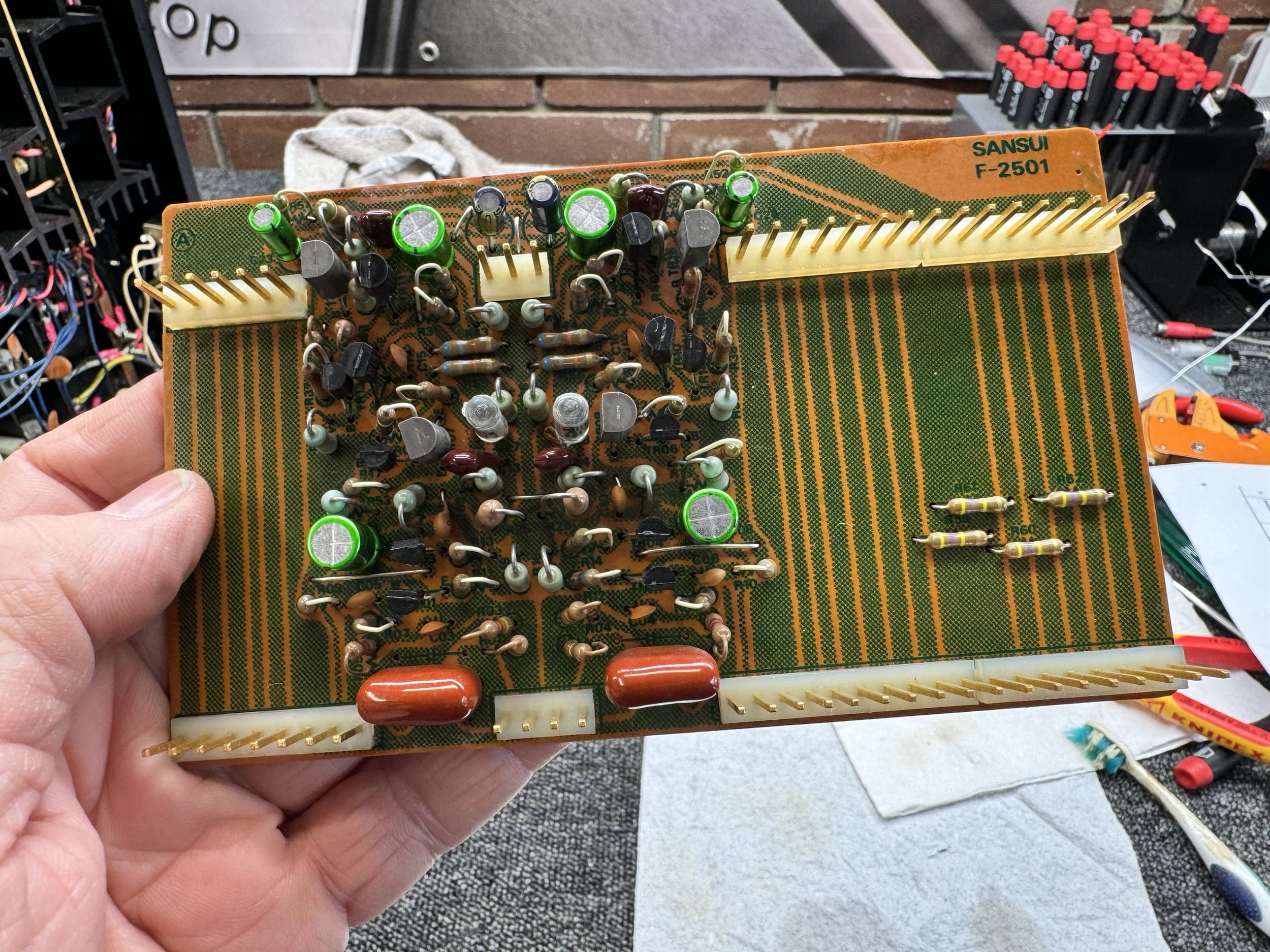
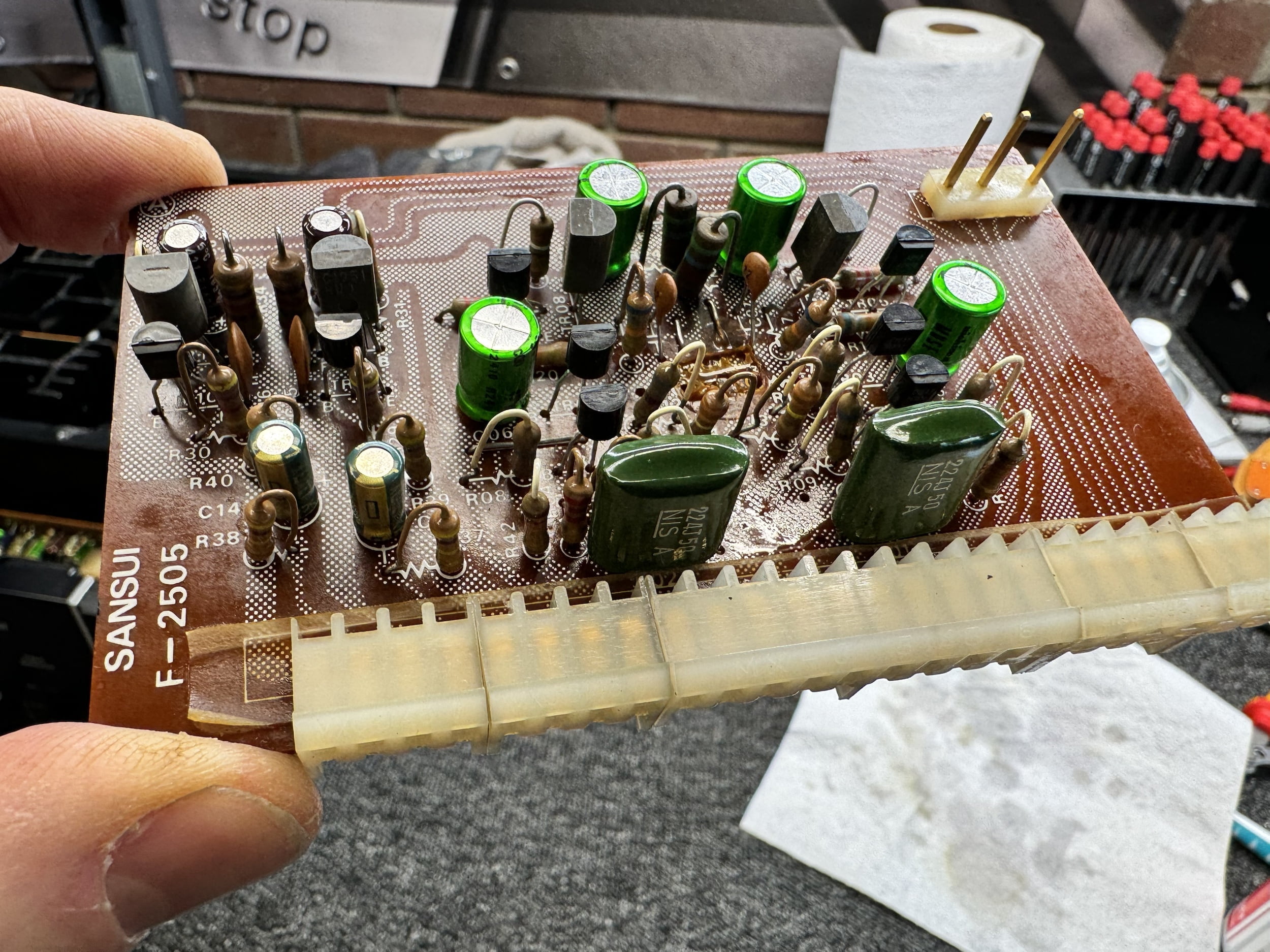
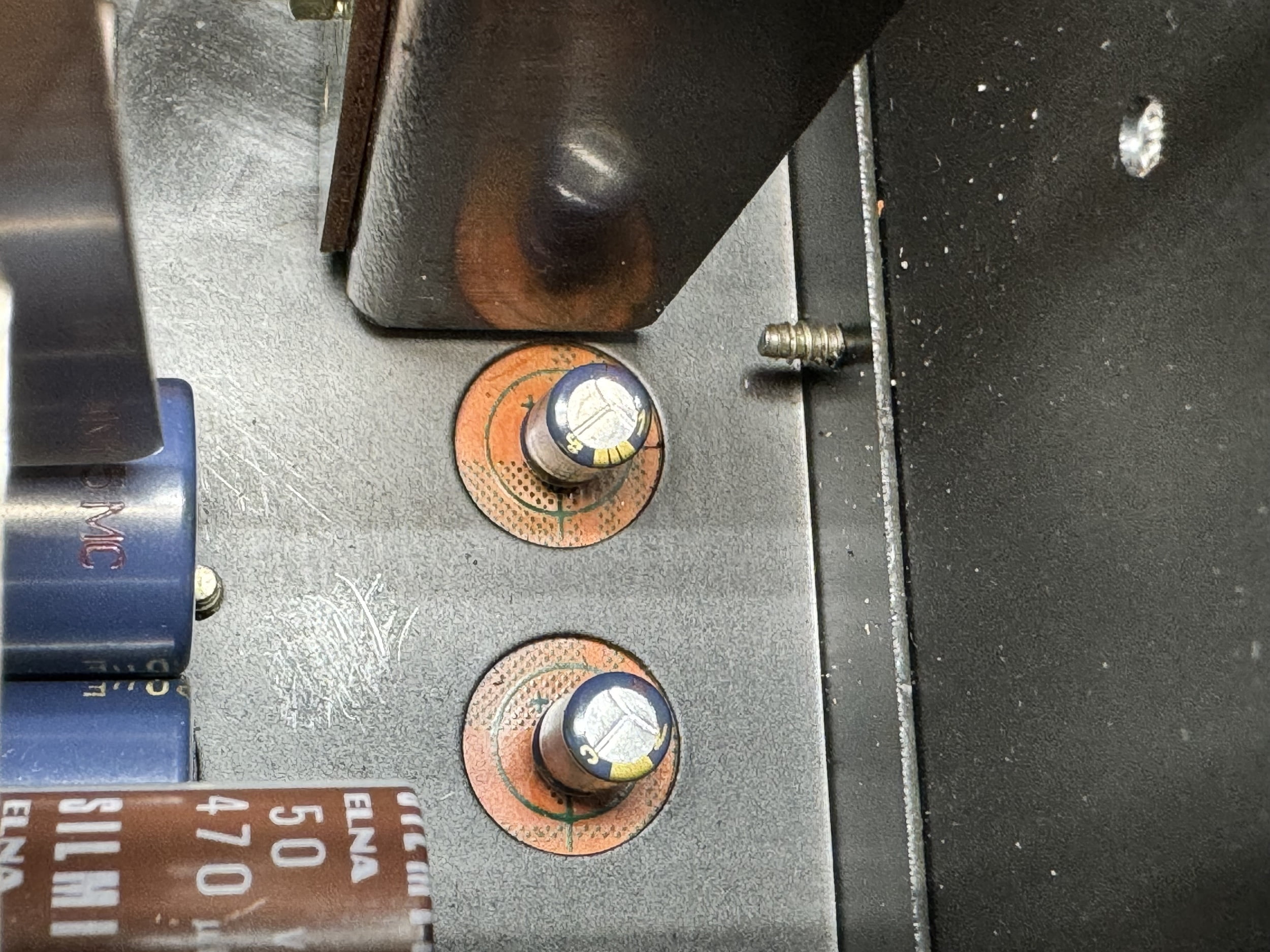
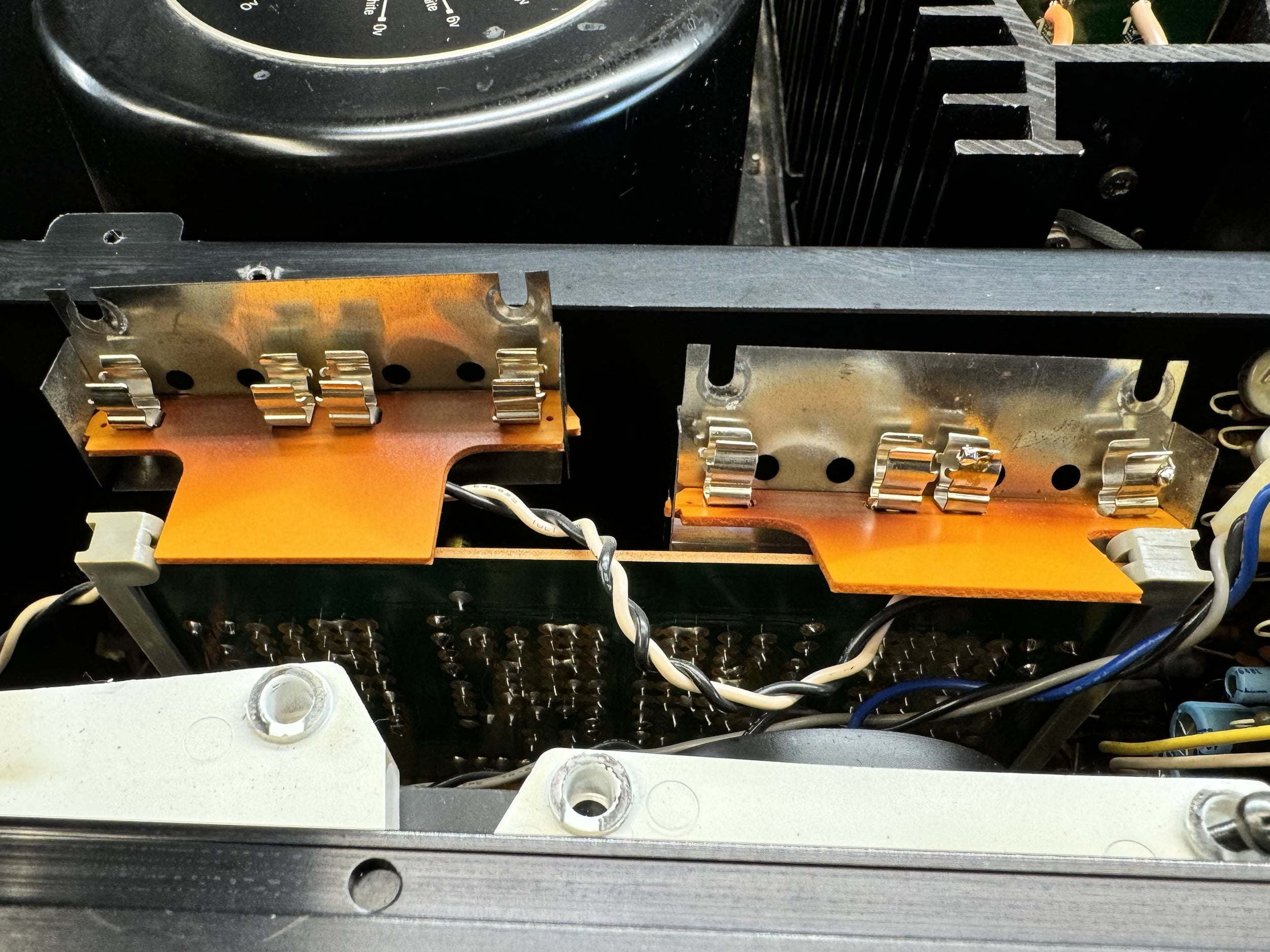

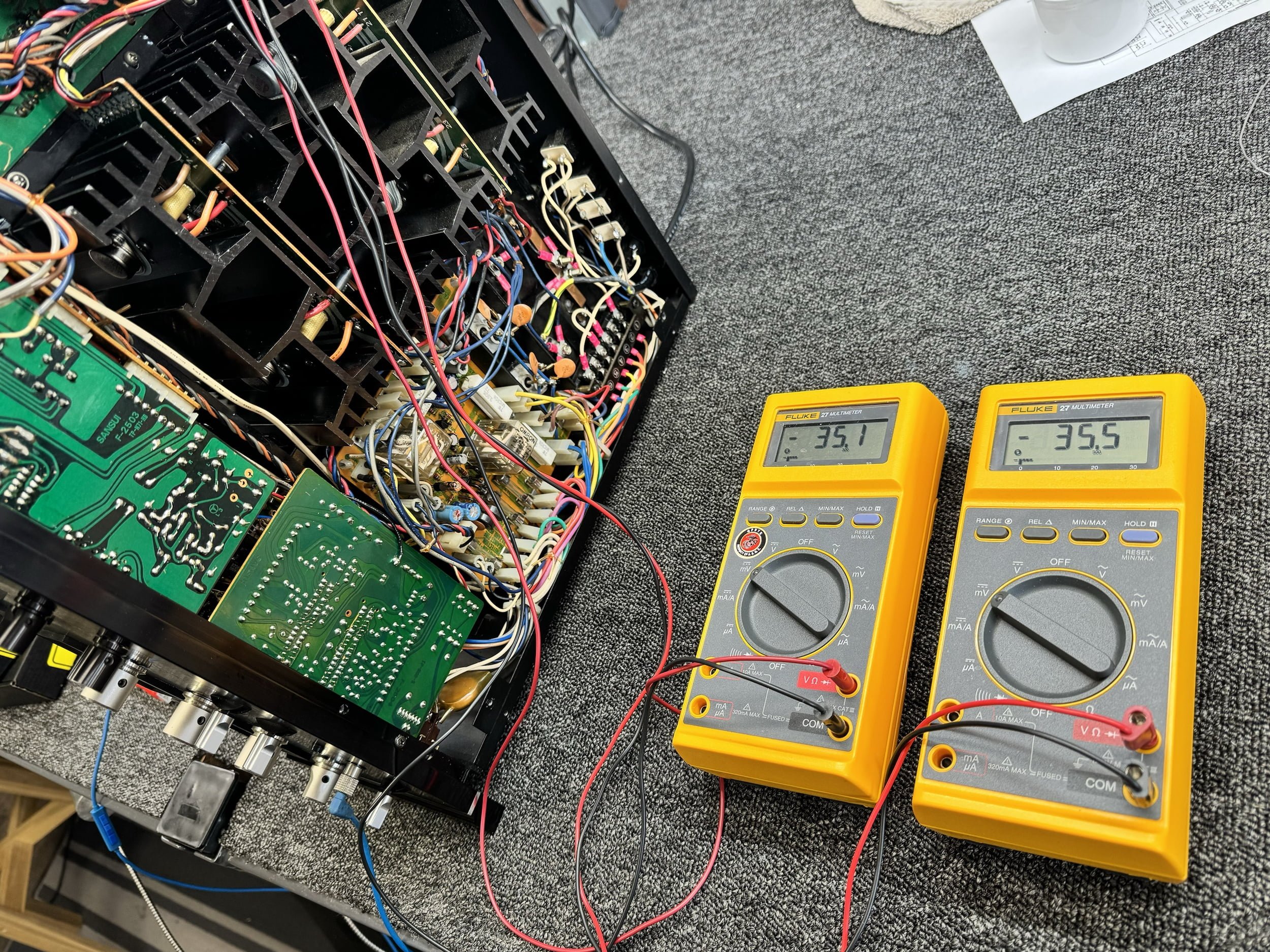
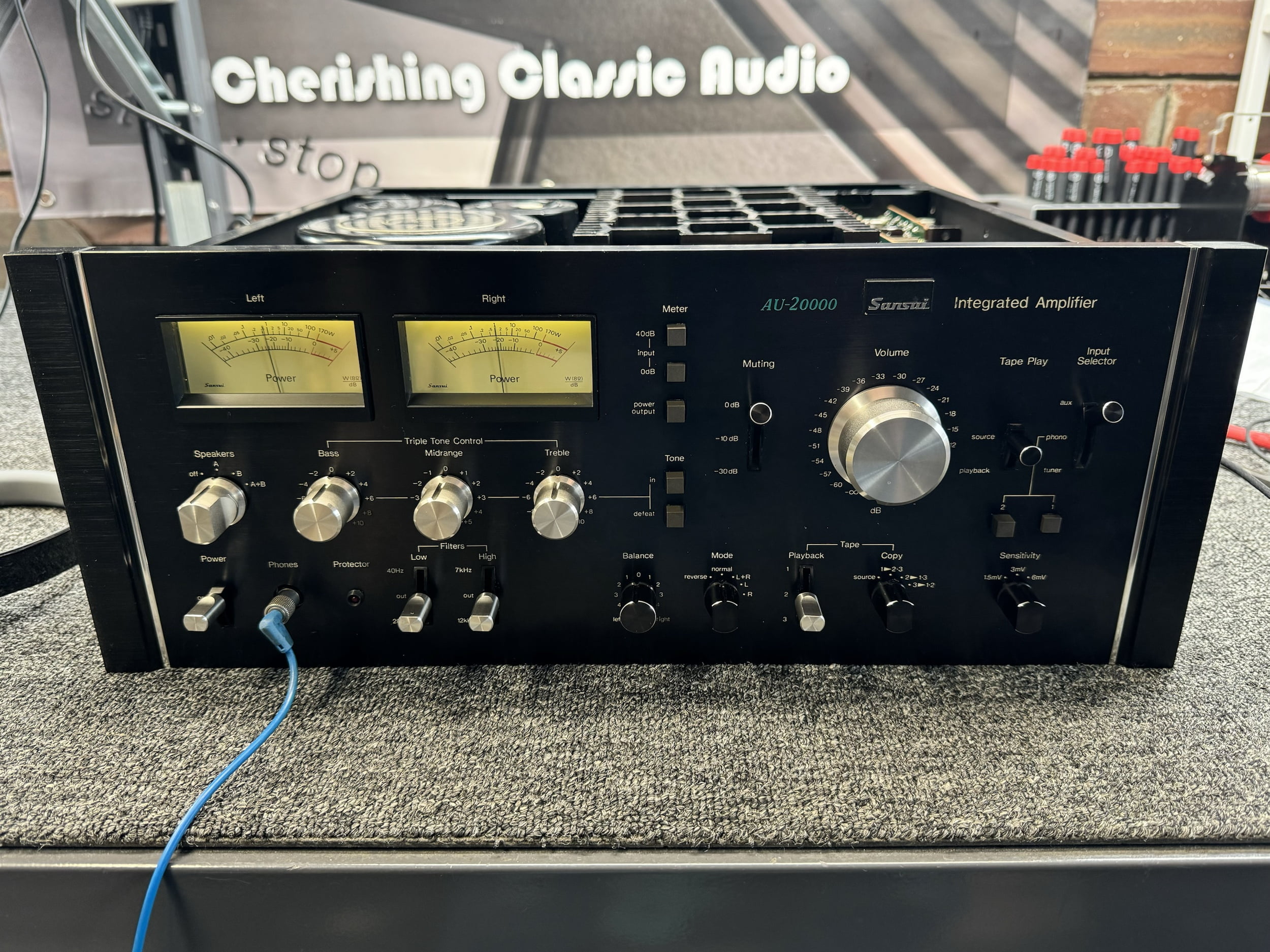
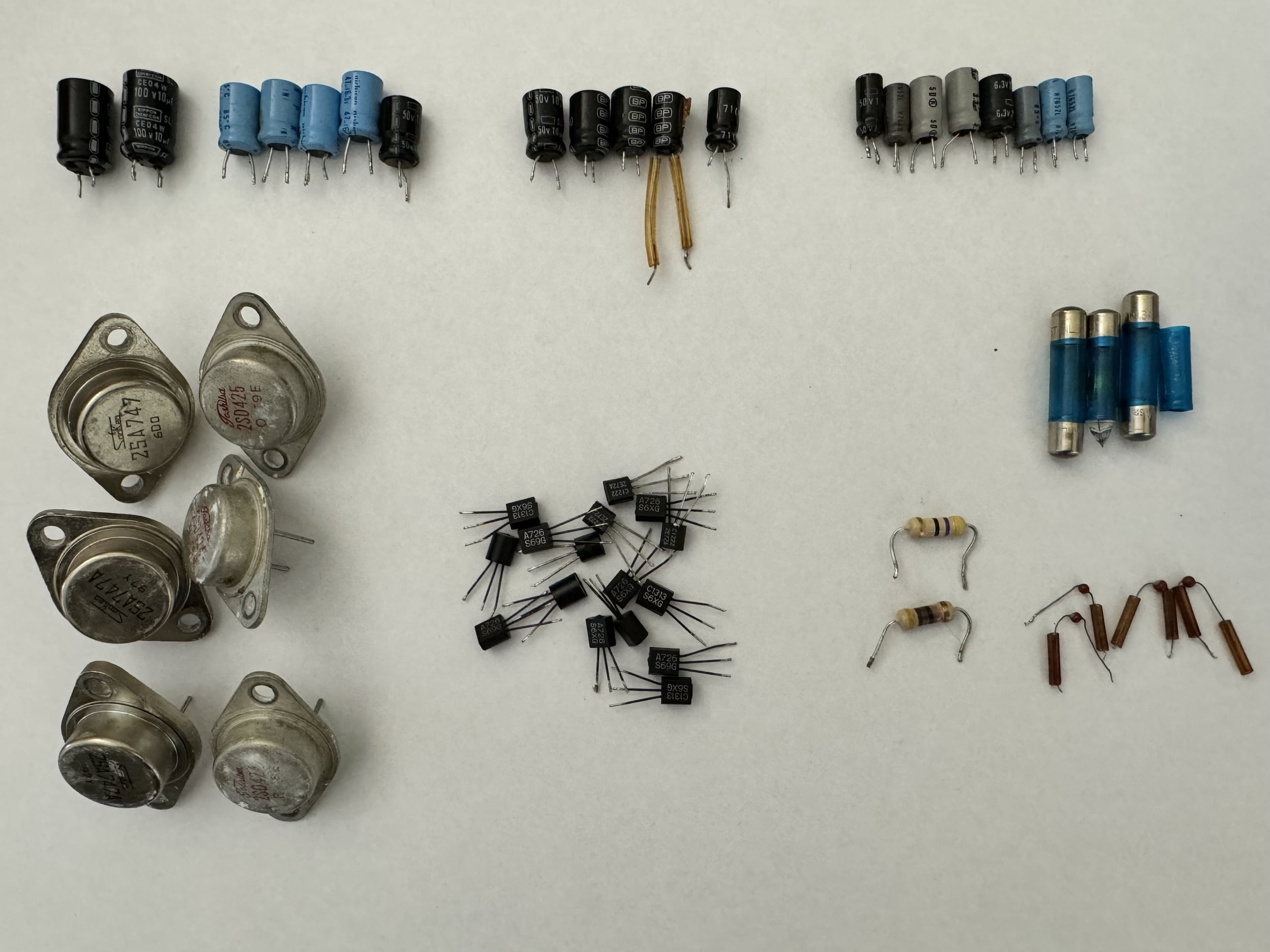
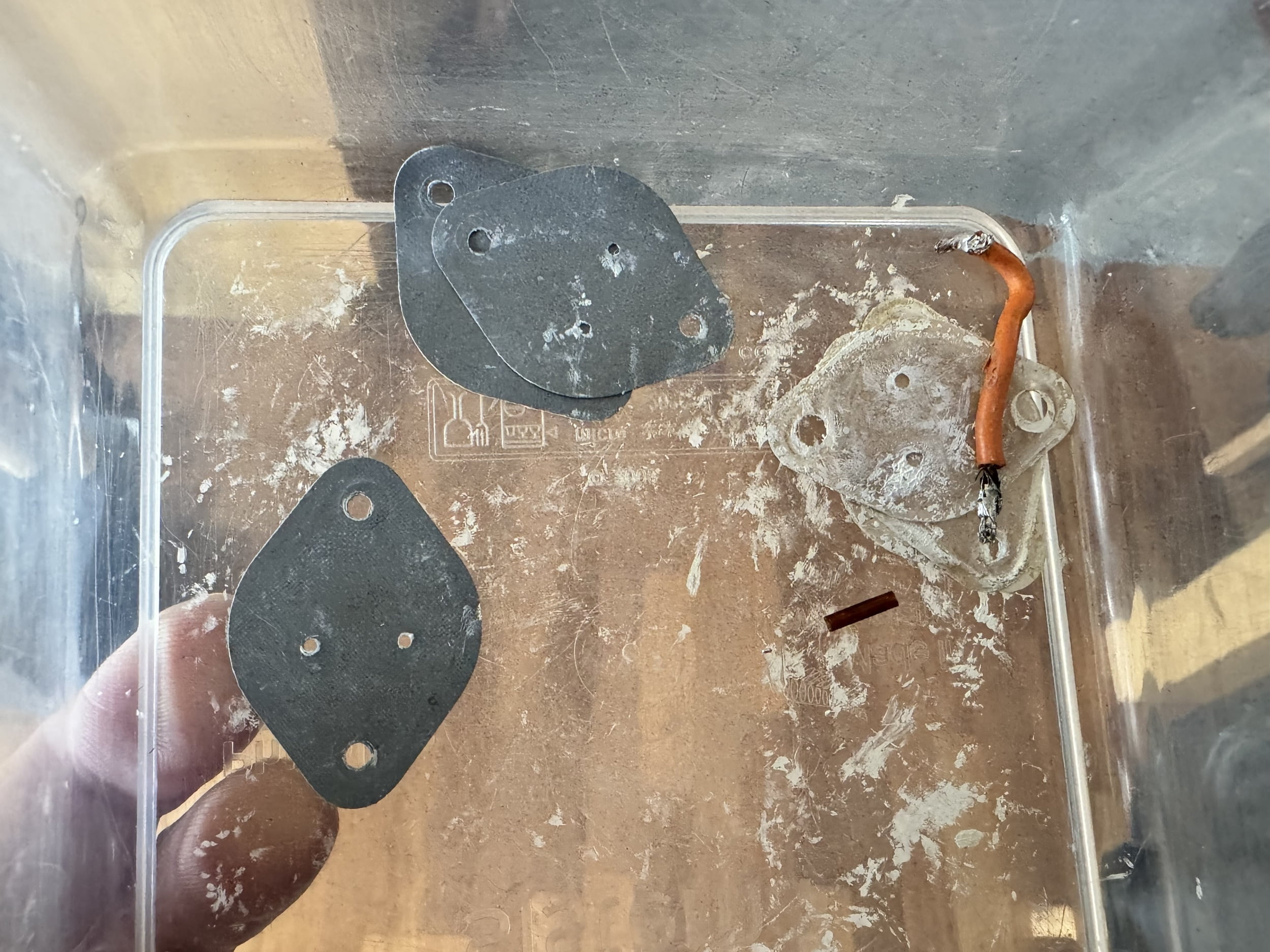
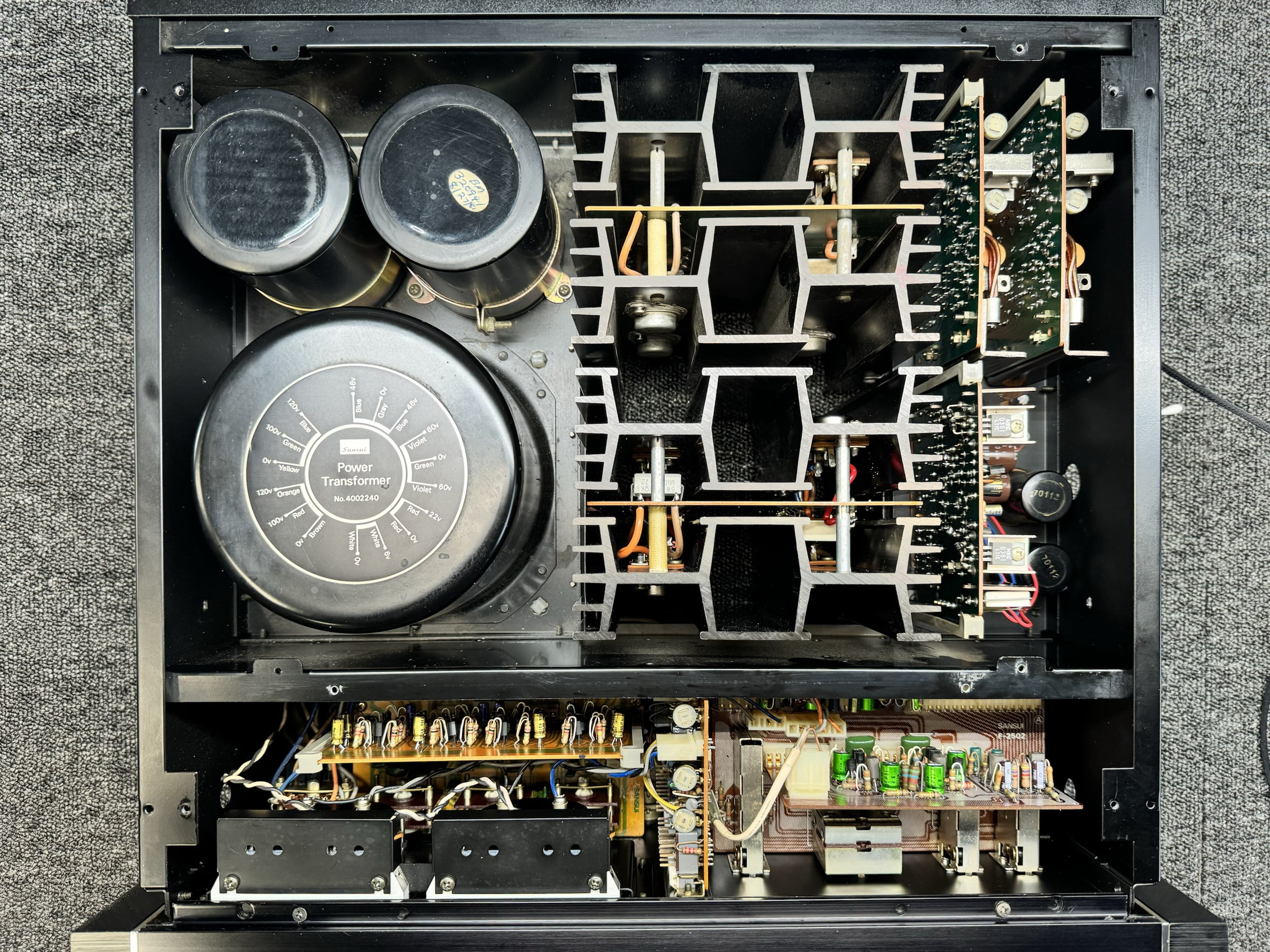
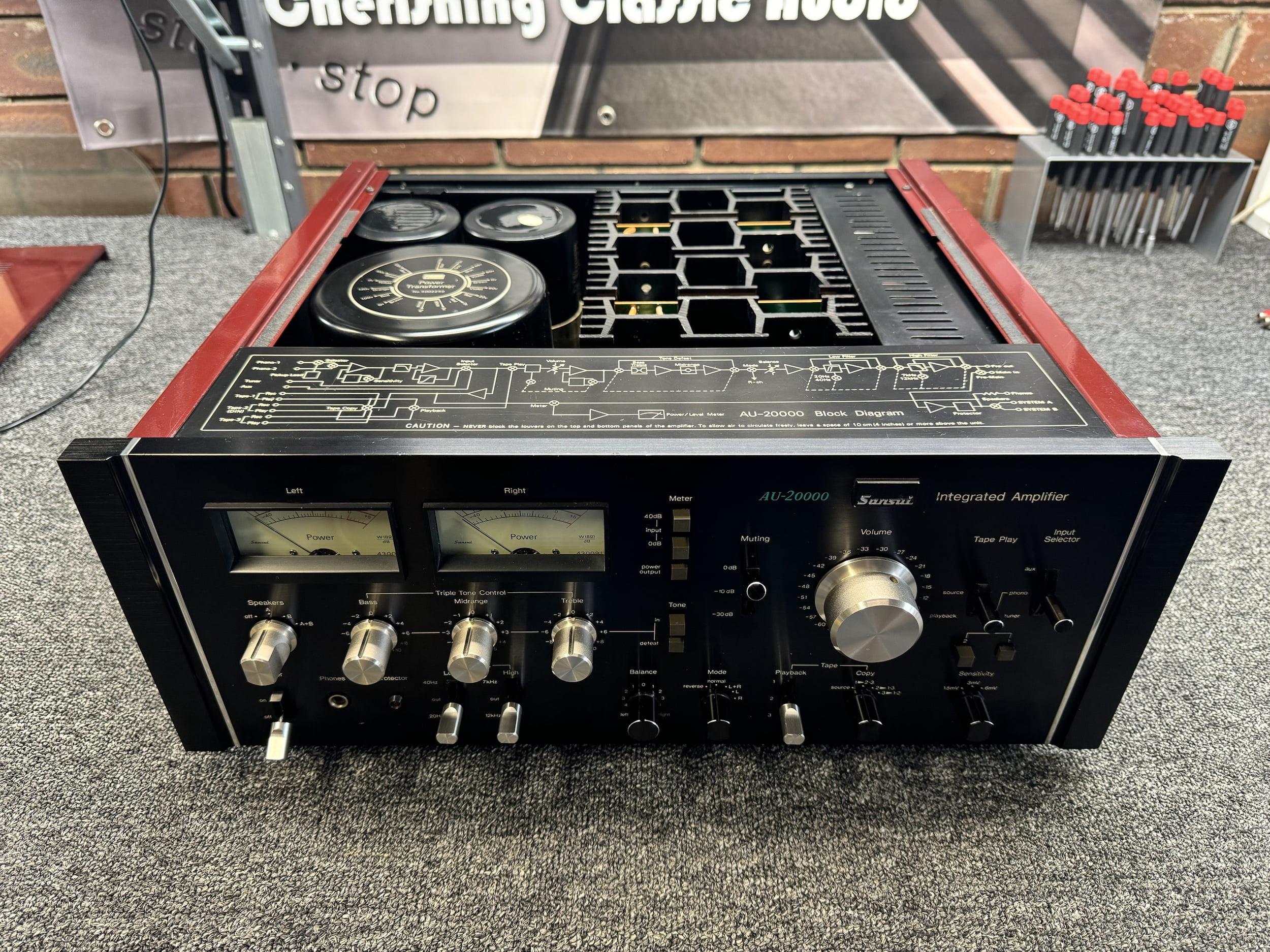
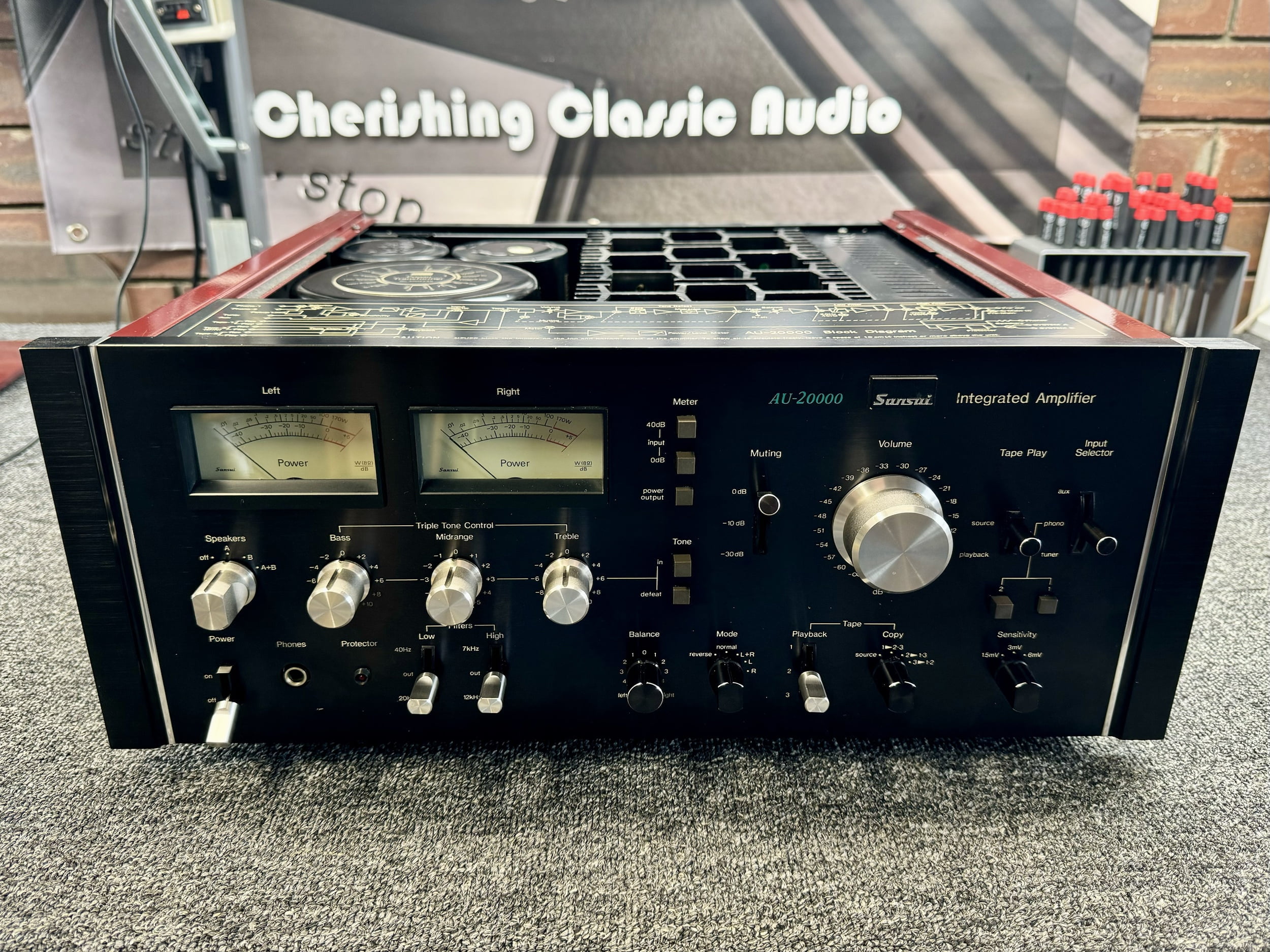
Results
WOW! I was almost as happy with the result here as the owner of this stunning Sansui AU-20000 is I think! I have to give a shout-out to Shaughan, her owner, for his patience with this job which has been with me since January. I’ve had people leave AU-20000s with me before, knowing I might not be able to look at them for a couple of months, only to collect them again, wasting everyone’s time. Shaughan is not one of those customers! For anyone reading this and contemplating such silliness, know that I now charge for that wasted time.
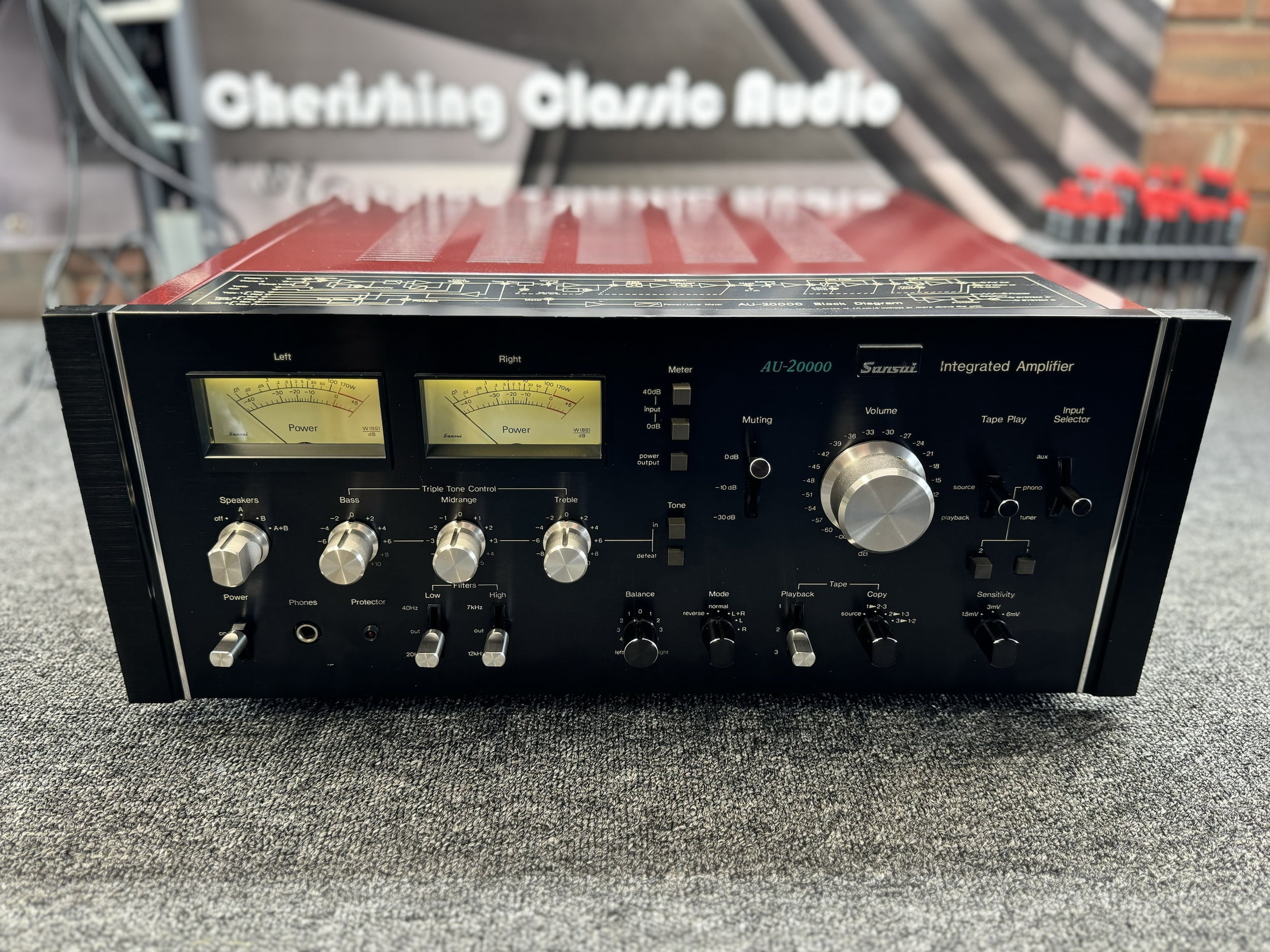
Repairing amplifiers like this is not only a technical challenge for me but also a way of demonstrating what can be achieved with the right approach. This sort of work showcases what we do in many ways, so it’s a story worth telling. I love equipment like this and fixing it is a labour of love for me. Just keep in mind that all good work takes time, the busy workload is there for a reason.
There is still more that could be done with this lovely AU-20000, but her owner is going to enjoy her for a while and let me know if he’d like additional work done to further improve performance. In terms of advice regarding buying an AU-20000, if you are considering one, and some certainly should, just be sure to have it professionally inspected before or after purchase.
Repairing equipment like this requires a specific approach and at 50 years of age, all Sansui AU-20000s need a range of remedial work to bring them back to really good working condition. I often say that buying a vintage piece like this is like buying an old car or motorcycle. Work will be needed and it will not be the sort of work everyone can do. No big deal, just useful information to have.
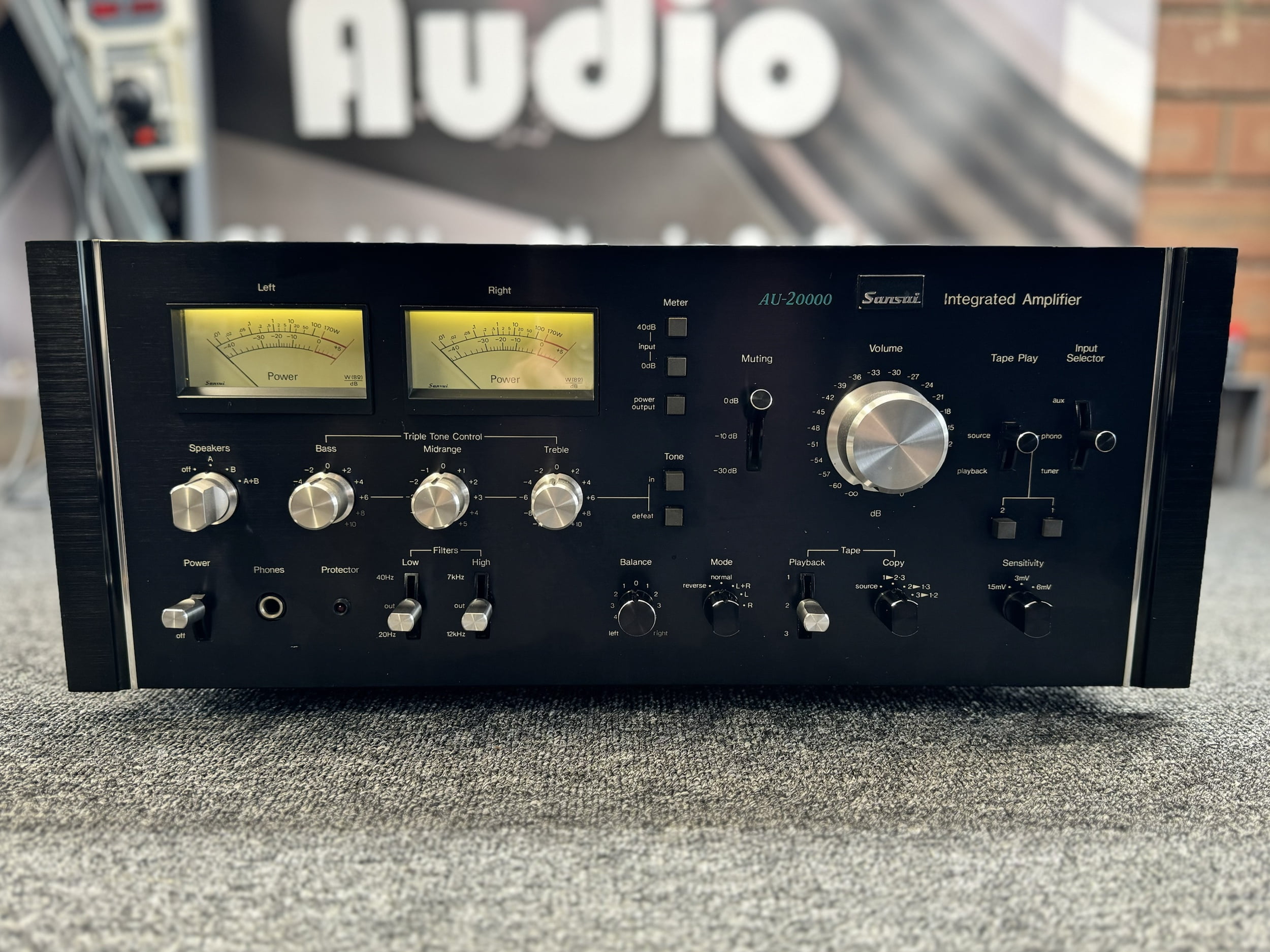
Sonically, this Sansui AU-20000 sings. These are muscular-sounding amplifiers, but also beautifully smooth and resolving, with silky controls and those beautiful VU meters to keep you interested for hours. Most ‘normal’ and period speakers will be driven effortlessly by a 20000, but tough lower impedance loads should be assessed case-by-case.
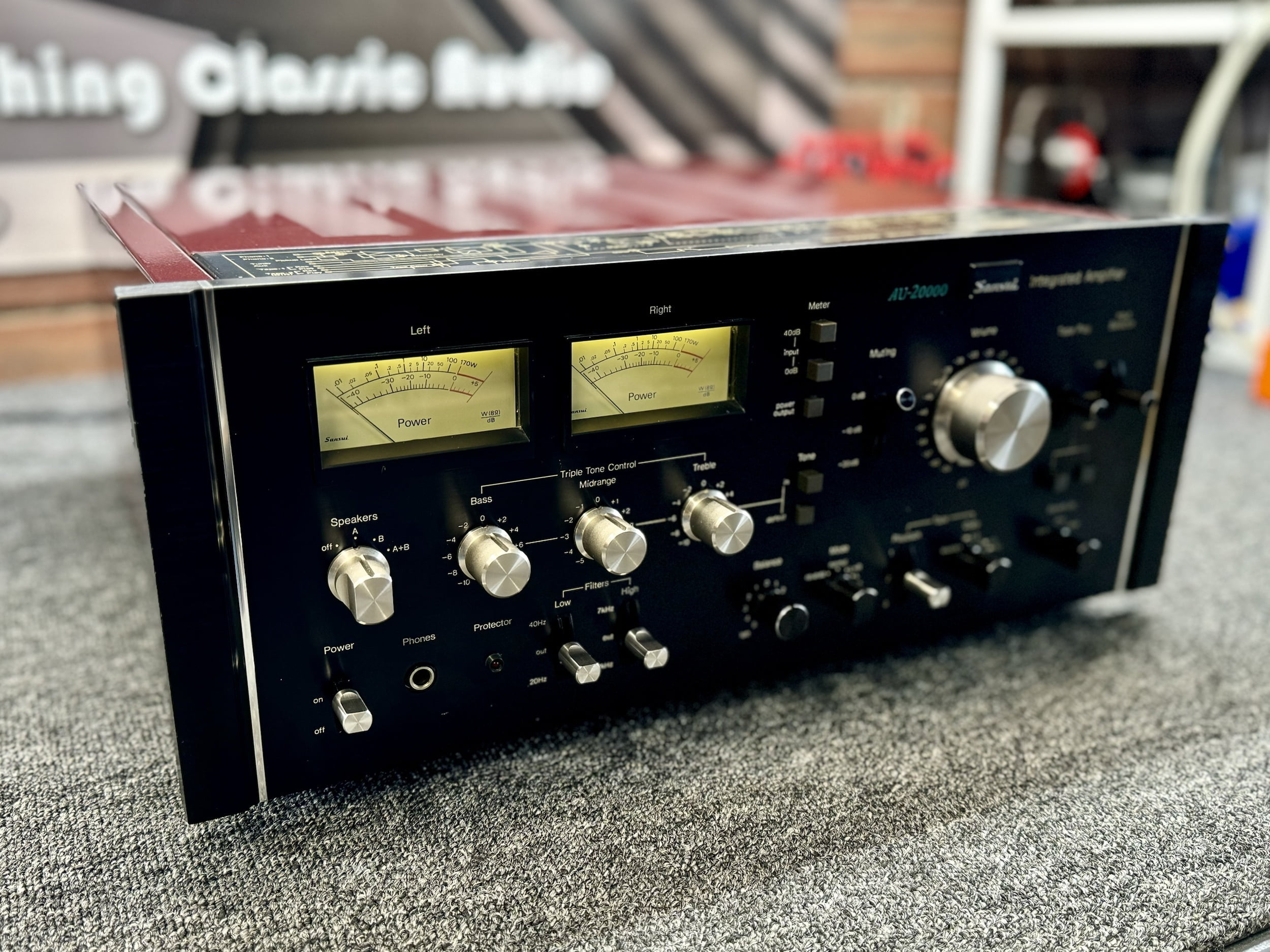

I would normally run through some comparisons with old and new gear and I will probably add these details later, but I’ve had a long day and this is all my energy will allow for today. In a nutshell though, if you are in the market for a classic stereo integrated amplifier, the Sansui AU-20000 should be near the top of your list.
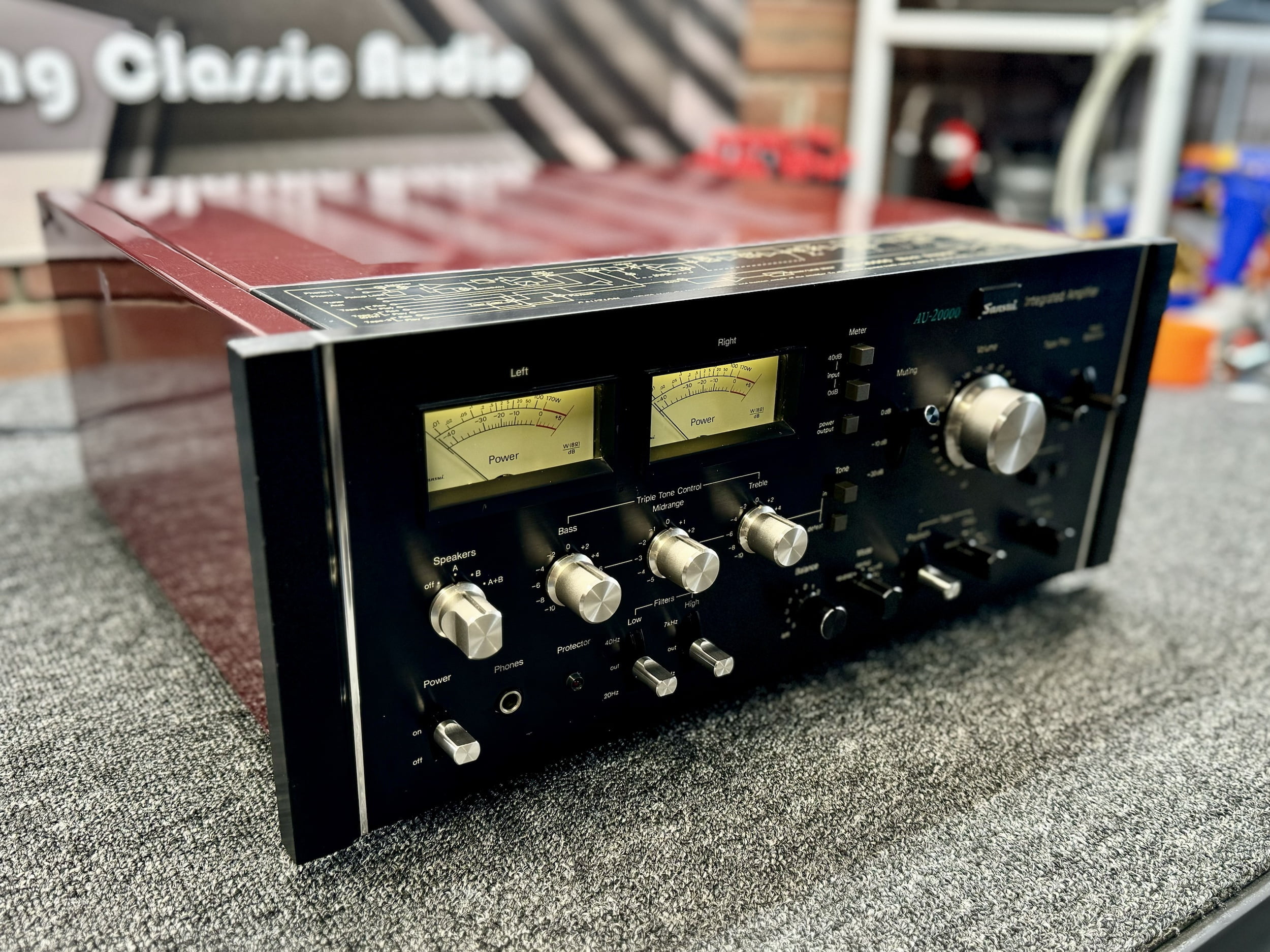
As always, thanks for visiting and I hope you enjoyed the article on the venerable Sansui AU-20000. You are welcome to use the donate button in the footer to shout me a coffee! It’s not lost on me how unique content like this is.
If you own an AU-20000 you’d like me to look at, or any other lovely Sansui amplifier for that matter, I’d be happy to assist. Get in touch via my contact page and let me know in the comments if you enjoyed this one and would like to see more like this or other categories of classic hi-fi equipment.
Stay tuned for more, hi-fi friends!
Sansui AU-20000 Integrated Amplifier
$3,000 - $8,000 AUDPros
- Superb modular build and performance
- Fantastic phono preamp
- Beautiful VU meters and many useful features
- Serviceable and repairable all-discrete design
- No crappy Bluetooth or built-in DAC!
Cons
- Amplifier modules prone to issues
- Full disassembly and overhaul needed at this age
- Limited number on inputs
Discover more from LiQUiD AUDiO
Subscribe to get the latest posts sent to your email.

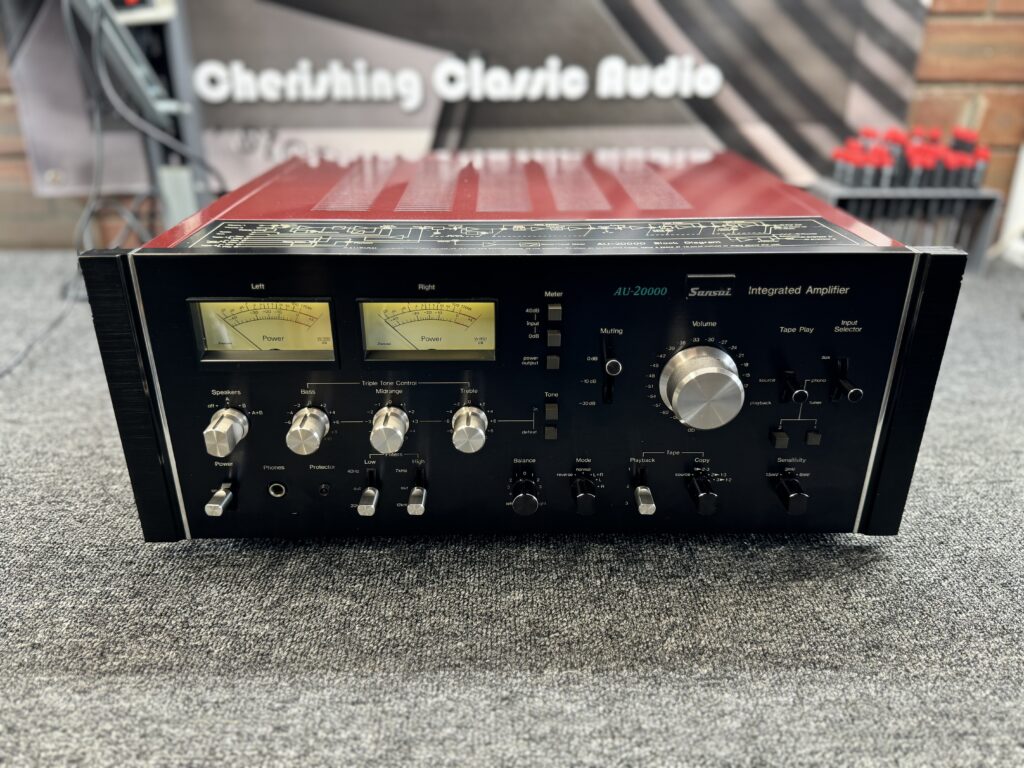
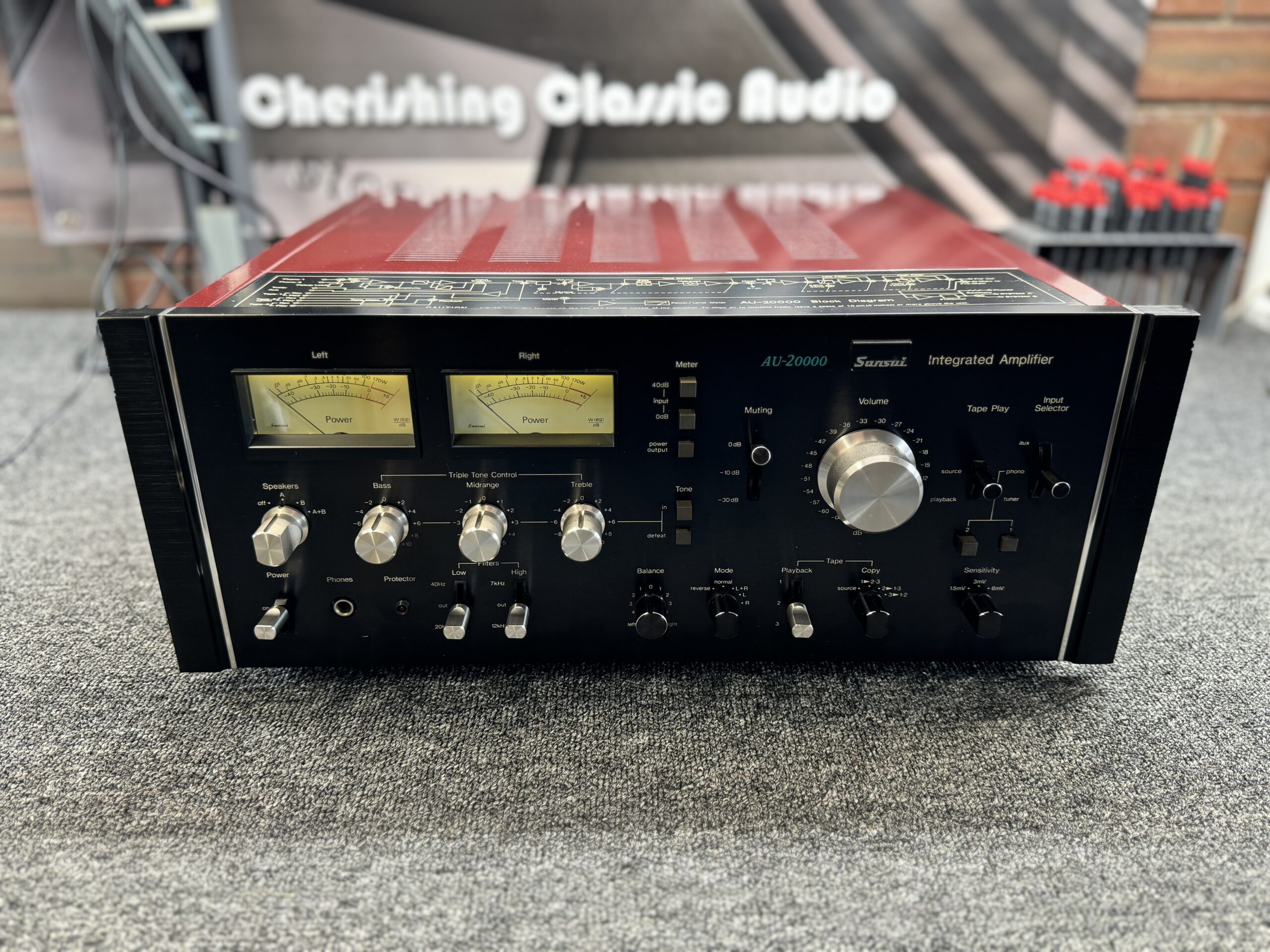


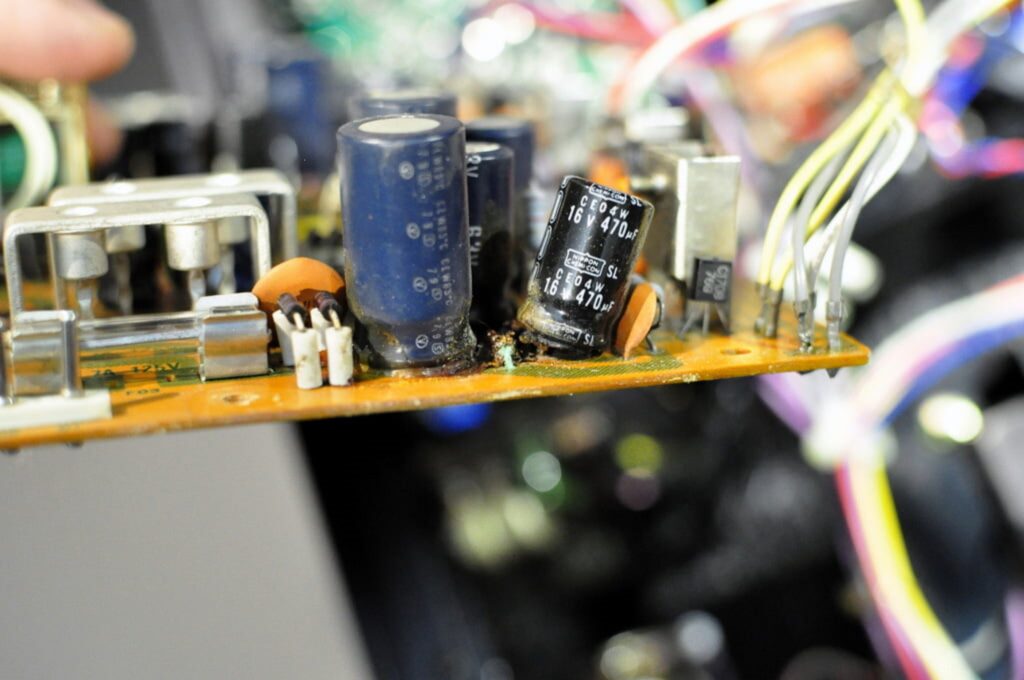
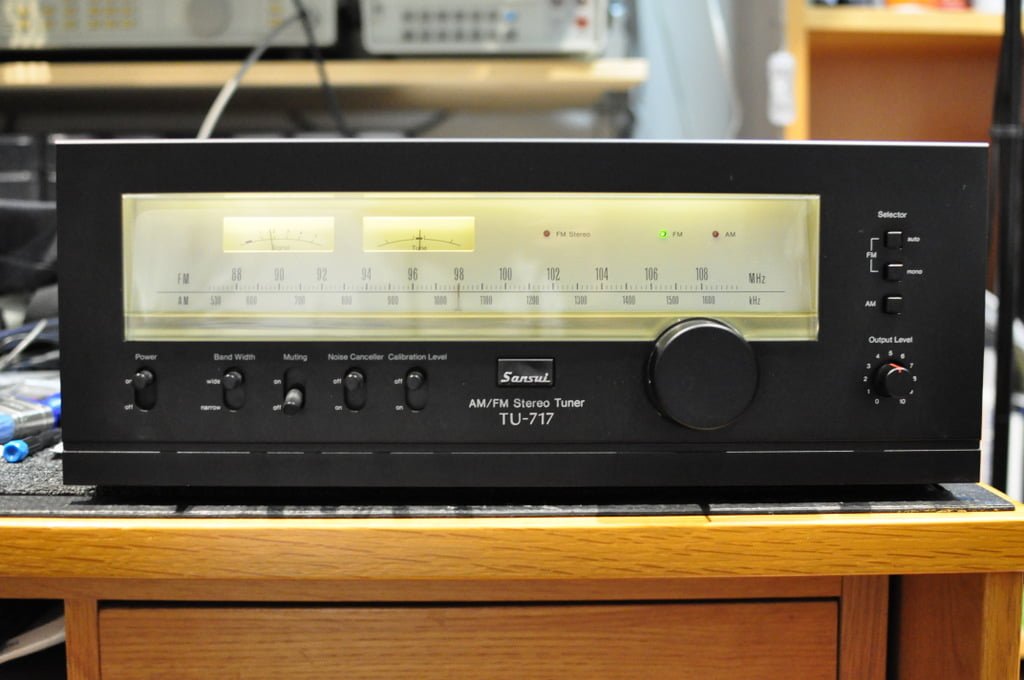
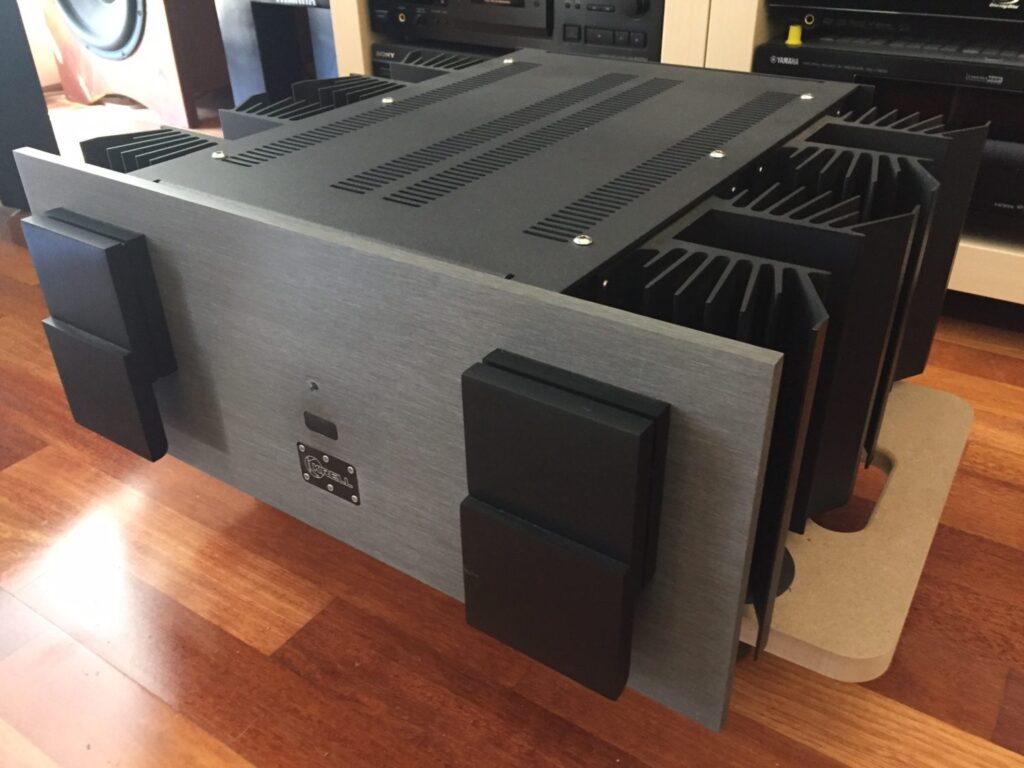
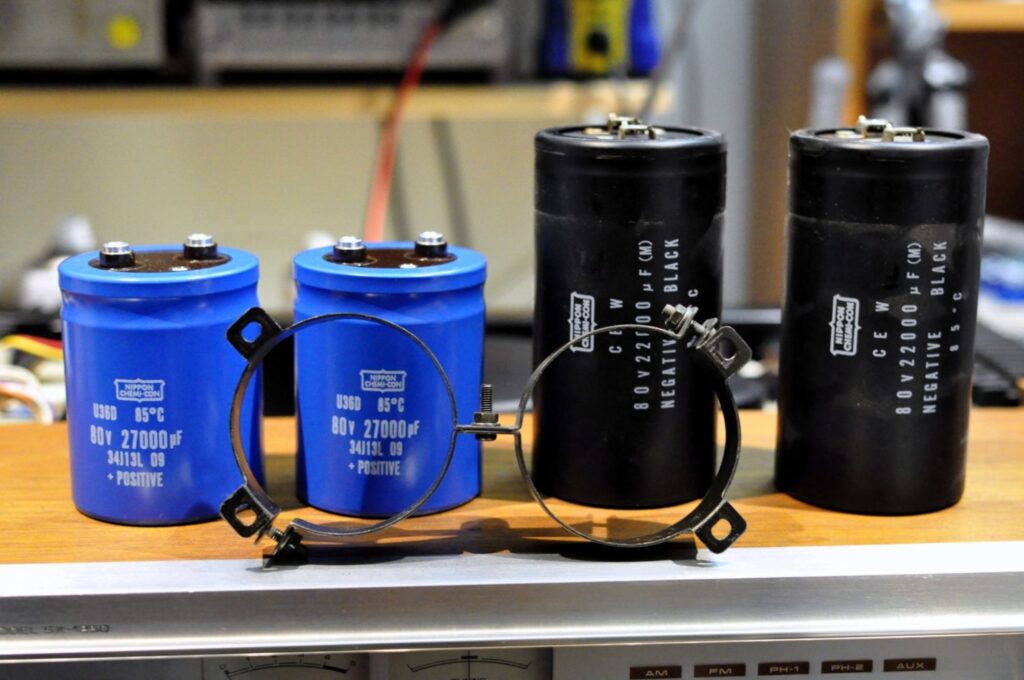
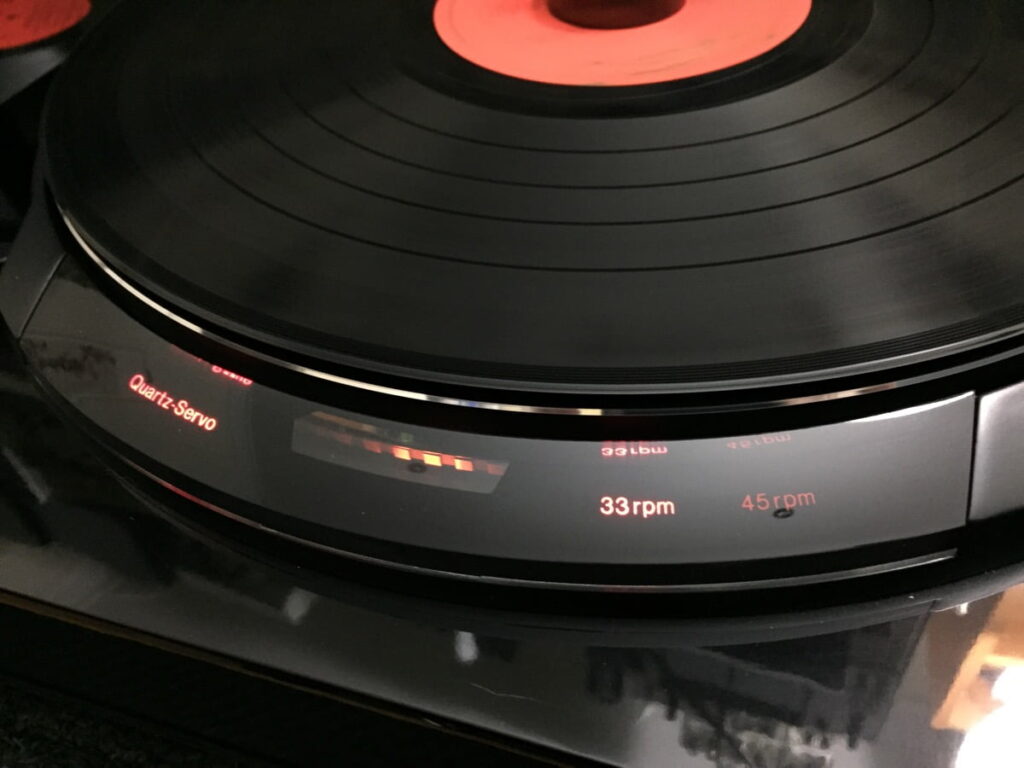
Superb work, Mike. Deeply impressive. Thank you for sharing and educating.
Thanks Robert, much appreciated, I made a few changes this morning to lighten it up. I was really tired when finishing this one off!
Is the rating correct 0.9 out of 10?!
No! Thanks to you and Robert for noticing this error induced by late night article completion! Refresh your browser, the issue should now be resolved.
Another informative article. Very annoying that previous repairs were so poor.
Thanks Glen, I agree though funnily enough, I’m so used to seeing work like this that I basically expect it now with equipment like this.
This amp puts my Sansui AU101 into a cocked hat! It’s a good read mate and well done.
Thanks Pete, the AU-101 is a classic but yes, the AU-20000 is quite an impressive beast!
Fascinating in every way, the work you do, priceless info and advice you provide in your write ups as well as photos included etc, thanks so much for sharing.
Thank you, Vladan, it’s just nice to be appreciated!
Hello Mike
Thank you for your time with this article and your other articles. They provide a wonderful insight into how great hifi was back in the day as well as how much better and accessible hifi would be today but for the snake oil that elevated mediocre British and American kit (and continues to do so). Unless one looks at the likes of Accuphase these days, there is very little that comes close to the great Japanese equipment of the 1970s to mid-80s like those beautiful Sansui amplifiers that you have featured..
As the owner of a horrible, poorly built and expensive Electrocompaniet amplifier, I can only say that your articles provide a welcome relief from what is so often passed off today as state of the art. It is astonishing that a Linn Sondek (which for the first ten years did not have a regulated power supply) could have been “musical”.
I look forward to your next article (especially, when you have time, an article on the restoration of your Luxman PD-350).
All the best.
Marius
Thanks so much for your thoughts Marius, we obviously share a very similar perspective. Many more articles coming including some on my PD-350 and L-07DII, proper turntables as you allude to, a world away from new gear that most people can afford these days!
Thanks again Mike for your time, I hope your visitor numbers pay off somehow!
I’d be interested in seeing a page or section devoted to The Best of the Best. You must have seen a lot of them or know of them.
Im thinking DACs, direct drive turntables, toner arms and cartridges [which I know nothing about], integrated amplifiers, power amps and preamps. Where do you stop? I guess it might create a storm of controversy though.
A page like this would help a lot of us from going sideways on purchases.
The best of the best deserve to be named, assuming there aren’t thousands of them.
Steve
Thanks Steve, with no advertising and the entire site/resource being free, a million could visit in a day and I’d not see anything from it financially, only more work I can’t take on! I need to evolve things a little, maybe create a subscription, paywall or similar, because I never see so much as a coffee from these articles, which is crazy. The new Hall of Fame is the resource you are asking about BTW and I’m adding to it as time allows. It will grow, but only a little time spent on it so far.
Bring on the paywall … I would be happy to pay… and to see you get paid.
Phil
Thanks Phil, genuinely appreciated!
Hey Liquid Mikey
Do what you must but do a risk assessment to clarify business interests vs your highly valued expertise experience and energy.
The way forward may be more obvious after this or not!
You know where l am coming from methinks.
Thanks Frank, we need to discuss I think, I need all the help I can get in terms of business thinking!
Hey Liquid Mikey
It seems obvious that people are stealing your ‘honesty and genuine integrity’ to further their own interests but you were and are the first mover of most of this. So you’re the man!
But arseholes abound in this dog eat dog world (loved that song).
Paywall of differing levels seems most sensible to me. Like Free stuff, Special stuff and Secret stuff. Not forgetting your abilities to advise etc…
Sorry but it seems like you need to take a step back and survey the followers and see if they are onboard with your thinking.
Yeah look l am not in a profit making business anymore so l see things from a team viewpoint. Does this help?
Hey Frank, thanks for this, much appreciated. Generally things are good but the expectation of everything being free and unskilled competitors copying/stealing are the biggest issues. Surveying readers is a great idea and one I’ve been thinking about. It’s a fine line figuring out how much to give away but everything here remains free for now. I have a donate button for people to say thanks, but that never gets used which I’ve always found interesting..! Again, really appreciate your thoughts.
Hey again liquid Mikey
Happy to chat at any stage but you are probably more clear and clever on your situation than what I will ever be!
Good work! Did you forget to re-install the poorly installed caps on the tone board ? How much does it push into 4ohms ?
Thank you very much, and no, I don’t forget things like this, especially not with a job like this one! All decisions are carefully considered based on the work order, the unit in question, faults, budget and so on. Specs are mentioned in the article, but I’ve not made a power output into 4 ohms measurement. It would be interesting to see that. I’m sure someone has made this measurement.